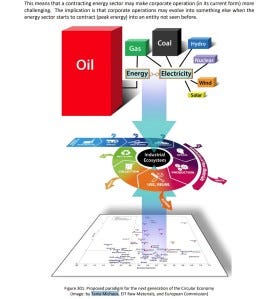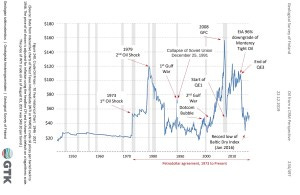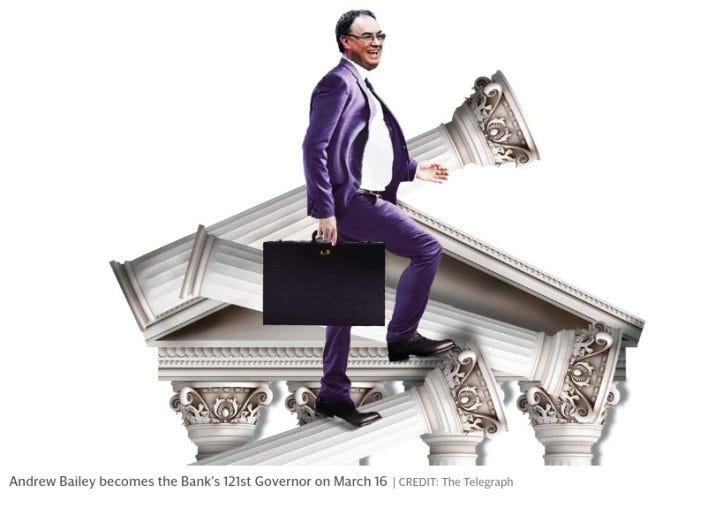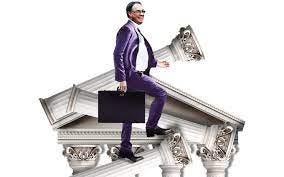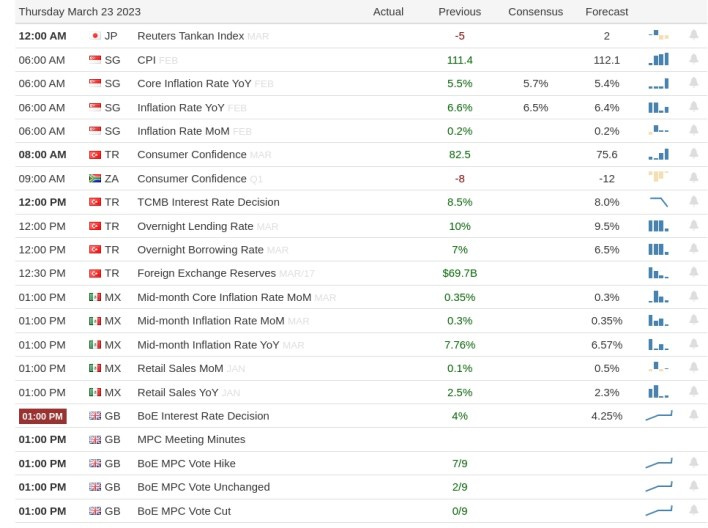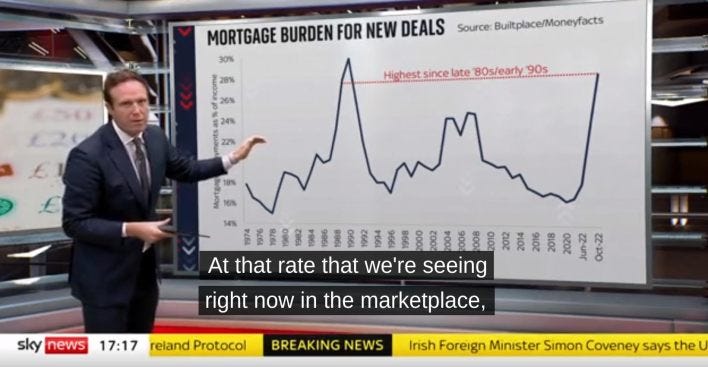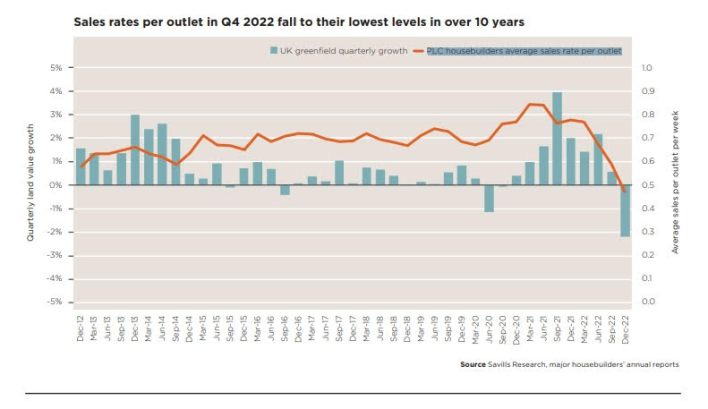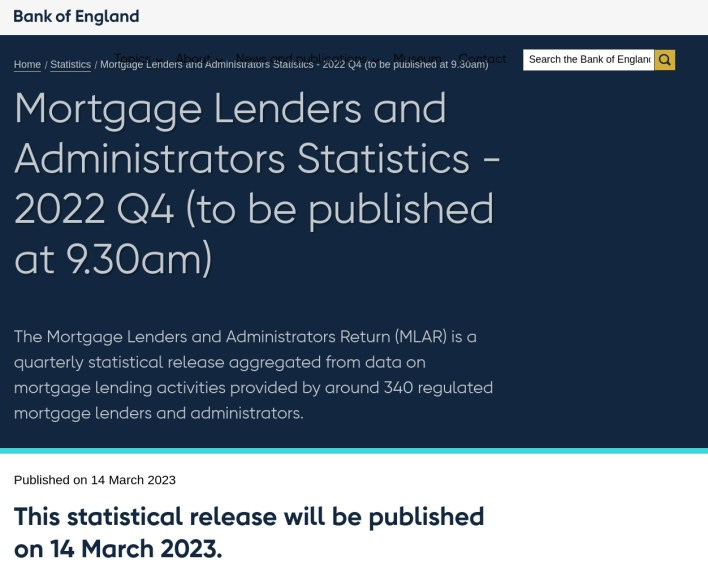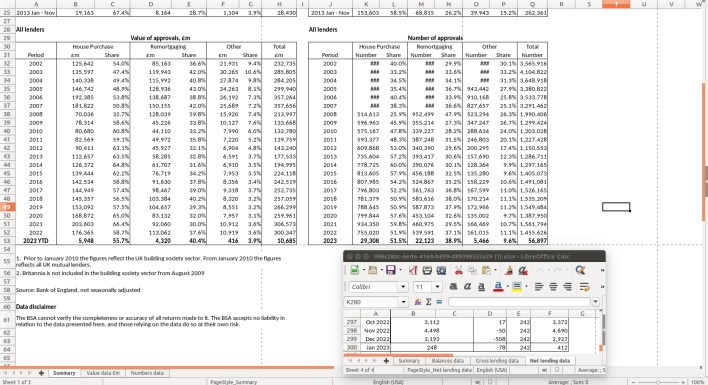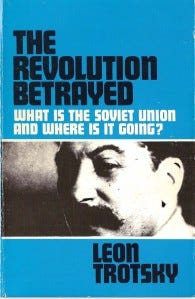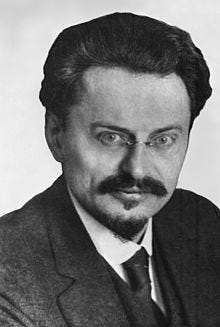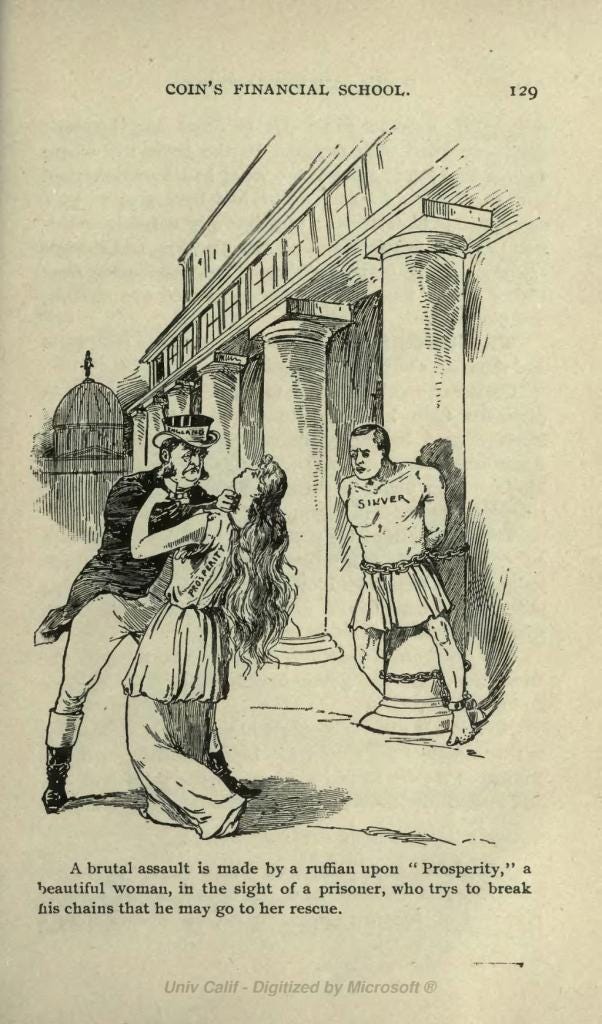THE SIX WAYS ON SUNDAY, CARBON CURRENCY END GAME 16 TO 1 ON, WHAT ARE THE ODDS OF THAT?. R&R DISCUS
My Shadow Banned Top 10.
THE SIX WAYS ON SUNDAY, CARBON CURRENCY END GAME 16 TO 1 ON, WHAT ARE THE ODDS OF THAT?. R &R DISCUSS.
The video discusses various controversial topics including the politics of vaccinations, environmental policies, and population control, touching on historical and modern perspectives, while critically examining the influence of elites and media regulations.
Detailed Summary for [THE SIX WAYS ON SUNDAY, CARBON CURRENCY END GAME 16 TO 1 ON, WHAT ARE THE ODDS OF THAT?. R&R REPLAY](
by [Monica](https://monica.im)
[00:00](
Exploring different books and authors
- Discussion on a white guy going to Africa and wearing tin foil}
- Reference to Robert Darnton and his biography of Voltaire}
- Mention of books like 'New Bottles for New Wine' and 'Quacks, Fakers and Charlatans'}
- Introduction to 'Dark Persuasion' and 'Radio Right' books}
[11:02](
Exploring the book 'Hope and Fear' by Ronald H. Fritzer
- Introduction to the book 'Hope and Fear' by Ronald H. Fritzer}
- Discussing the importance of sourcing avenues of inquiry}
- Exploring the politics of vaccinations in England and Wales from 1800 to 1874}
- Mention of Caitlyn Jenner in relation to vaccinations}
- Focus on conscientious objection to vaccination}
[21:53](
Discussion on the Club of Rome, peak oil, and population control
- Mention of Club of Rome and wealth stealing}
- Research linking to Club of Rome and peak oil}
- Connection between Club of Rome, population control, and eugenics}
- Boris Johnson's mention of 'in a nation of truth' related to famine}
- Reference to potential extermination and political cleansing}
[32:43](
Discussion on the regulation of comment boards and potential consequences for sharing untrue information
- Newspapers and comment boards are not regulated like other platforms}
- Concern over being penalized for sharing known untrue information}
- Debate on criminalizing statements known to be untrue}
- Criticism of the broad scope of regulations and implications on free speech}
- Comparison to historical shaming practices and implications for current issues like climate change denial}
[43:43](
Discussion on the significance of hydroelectric power and its challenges in the energy sector
- Hydroelectric power is considered green and renewable, but faces ecological concerns}
- Renewables only make up 5.7% of total energy, with geopolitical issues affecting hydroelectric projects}
- Explaining the historical bio-metallic standard and the ratio between gold and silver}
- Historical ratios of gold to silver varied between 12 to 1 and 16 to 1 over 5,000 years}
- Importance of the gold-silver ratio in trade and its impact on historical economies}
[54:30](
Discussion on population control and environmental concerns
- Debate on the impact of overpopulation on the planet}
- Environmentalists expressing concerns about the number of people on Earth}
- Criticism of denialism and suppression of scientific debate}
- Psychological analysis of dissenting opinions on environmental issues}
[01:05:24](
Discussion on greenwashed policies and fossil fuels
- Central banks' lack of intention to address fossil fuel use}
- Debate on fossil fuels causing global heating}
- Banks taking advantage during the dash for cash}
- Metaphor of predator and prey in financial dealings}
- Advocacy for a better approach to prosperity}
[01:16:18](
Discussion on controversial topics and historical figures
- Inappropriate joke about the Holocaust}
- Mentions of controversial language use by public figures}
- Debate on the reputation and work of historian David Irving}
https://web.archive.org/web/20230331070734/https://www.bitchute.com/video/BTqQ2FyU8Uzc/
THE SIX WAYS ON SUNDAY, CARBON CURRENCY END GAME 16 TO 1 ON, WHAT ARE THE ODDS OF THAT?. R &R DISCUS
https://notthegrubstreetjournal.com/2022/02/06/the-six-ways-on-sunday-carbon-currency-end-game-16-to-1-on-what-are-the-odds-of-that/
If one observes the long game the dominant Narrative of the past 30 years is Climate Change and CO2 emission being the only thing anyone needs to focus upon. The Carbon footprint narrative is by a long chalk well ahead of the curve even with the relatively short but seemingly endless Pandemic and Vaccine Narratives of the Past two years.
Naming names ,Larry Fink of Blackstone and Blackstones Going Direct is considerably more powerful a control lever on what happens next than the efforts of Bill Gates and Dr. Fauci to enrich Big Pharma and themselves, Gates also has a bigger card in the game and that is Digital ID and its relationship to both Near earth Satellite networks and the 5G networks, which coincidentally really were rolling out at the Same Time as the Wuhan Event, also in coincidentally Wuhan.
The Vaccines and Vaccine Injury is very much closely related to the Adjuvants and not necessarily the Pathogen dose delivered in the solution of the Adjuvant. It is the Adjuvant rather than the disease which is of interest to the 5G / ID aspects of what the past two years have really been all about.
The Repo Spike in Newyork on September the 19th was the starting pistol, of course, the dress rehearsal was Event 201, The Objective was almost certainly to gain widespread acceptance of Digital ID's on SmartPhone devices and possibly by stealth through Nanotechnology, within the Adjuvant solutions in the MRNA vaccines( Experimental Gene Therapies?).
So what about Climate Change, CO2, and all that, no its not the Graphine found in some adjuvant samples but the Rationing of Carbon through a Carbon-based currency which is why the Climate Change Agenda particularly the CO2 control knob is so important.
The ratio of Good Energy ( renewables) for which Carbon Credits will be created and Bad Energy of "Fossil Fuels which represent Carbon debits, is 16:1. There are various combinations which could see the ratio vary but essentially as with The Gold Standard a Carbon Credit Renewables Standard has the same ratio as the Historical Bi-Metallic ratio known to numasticist's the world over. A deflationary centralised banking regime will be able to impose Austerity to an authoritarian extent extending to a population control mechanism. This is a far more likely delivery mechanism for Rapid population reduction policies than any Vaccination regime, Famine equally, is a far more effective and efficient means of population reduction than certainly War or any other form of genocide, also for the Authoritarian regime deploying it, it is also complete with a shield of plausible deniability.
Just my 10 cents per KW/h or my 100 euros/tonne of CO2
https://www.reuters.com/business/energy/europes-carbon-price-nears-100-euro-milestone-2022-02-04/
Just Saying.
https://notthegrubstreetjournal.com/2022/02/06/the-six-ways-on-sunday-carbon-currency-end-game-16-to-1-on-what-are-the-odds-of-that/
https://en.wikipedia.org/wiki/The_Tissue-Culture_King
https://isgp-studies.com/coast-to-coast-am-911
https://thesenecaeffect.blogspot.com/2021/09/the-age-of-exterminations-who-will-be.html
Carey
https://archive.org/details/commercechristia00care/page/n1/mode/2up
Julian Huxley Eugenics film from 1937
The Archbishop chairs the first session
by Ingrid de Kok
http://www.elizabethrockepoetry.com/2016/05/13/the-archbishop-chairs-the-first-session/
https://notthegrubstreetjournal.com/2021/03/25/pass-laws-and-banned-people-vaccination-apartheid-gatekeepers-matchfixers-goalkeepers-iabato-slogfest-isthegorillatired/
https://notthegrubstreetjournal.com/2018/04/22/who-is-gnasherjew-labour-anti-semitism-ephors-of-probity-who-in-the-world-do-you-think-you-are/
https://notthegrubstreetjournal.com/2019/07/15/jaccuse-zola-giddings-and-thank-god-for-grub-street-brexit-chie-en-lit-no/
Referencing samizdat, a concept synonymous with underground publishing in the Soviet era, Zinoviev's account sheds light on the dynamics of dissent and control. It is heartening to find resonance between my findings and those presented here, underscoring the compatibility of our perspectives.
this snippet from Zinoviev's yawning heights apposite.
“The experiment was dreamt up by the Institute for the Prophylaxis of Stupid Intentions and carried out under the supervision of the Brainwashing Laboratory, written up in the Fundamental Journal, and was supported by an initiative from below. The experiment was approved by the Leader, his Deputies, his Assistants, and by everybody else—except for a few holding mistaken opinions. The aim of the experiment was to detect those who did not approve of its being carried out and to take appropriate steps.“
The Gatekeepers Club, a metaphorical reference to the guardians of societal inertia, prompts contemplation about leading the "Walking Dead" into eternity. This metaphor encapsulates the struggle against complacency and conformity, resonating with Ugo Bardi's observations.
The notion of shadow banning, as evidenced by Google twiddelers' actions, raises pertinent questions about digital censorship and control. It is a reminder of the need for alternative modes of communication that resist surveillance and manipulation.
The Rise of Feudal Techno-Rationing Systems
In the current landscape of international affairs, there is a growing concern about the emergence of what can be described as Feudal Techno-Rationing Systems. This concept has been thoroughly explored and explained by K. Galalae in his work on the International System of Depopulation Globalization.
One of the key components of this system is the implementation of a carbon currency end game, which can be seen as a confluence of economic myths directed by a no longer invisible hand. This hand seeks to bring in a techno-rationing system that has significant implications for global populations.
Amidst this backdrop, the concept of "Creorder out of Chaos" has gained prominence. This notion emphasizes the restructuring and reordering of systems and structures in the face of chaos and uncertainty. It is within this context that the Panoptican Jailer Bot (PJB) has emerged as a significant player in regulating and controlling information flow.
Furthermore, there is a pertinent issue regarding the feeding of internet trolls, which has broader implications within the digital realm. The function of platforms like Substack within the Digital Gulag has been brought to light, with concerns raised about the maintenance of audience engagement and the perpetuation of internet ghettos.
In response to these challenges, there has been a proposal put forth by Roger Lewis of Wiki Tactical Voting. The proposal centers around the distribution of preloaded IPFS nodes/dongles for ground teams in constituencies. This approach aims to facilitate the dissemination of information through preloaded thumb drives, drawing inspiration from the historical significance of pamphleteering.
The metaphorical "Rock Thrown in the Pond" serves as a call to action, echoing the sentiments expressed by Walter Burien. His stance on not responding to manipulated narratives and instead throwing back the metaphorical rock is emblematic of a proactive approach to navigating the digital landscape.
Additionally, there is a discussion on the concept of "precogs" and their role in serving as deterministic judges of future crime. This metaphor sheds light on the functioning of the digital gulag and permitted ghettos, where individuals deemed as malcontents can be monitored and dealt with on a pre-crime thought crime basis.
Amidst these complexities, there is a recognition of the prevalence of "Peak Bullshit." This sentiment is further underscored by the recent release of "Don't Look Up," which serves as a poignant commentary on the current state of affairs.
In light of these developments, it is imperative to consider the implications of Bill Gates' influence and his association with the Rockefeller family. The parallels drawn between the current trajectory and the 1930s-style debt deflation warrant careful consideration and reflection.
In his Master’s thesis, Ugo Bardi highlighted the privacy advantages of his "Olivetti 22" typewriter compared to the digital age. This resonates with the enduring success of the "Seneca Effect" blog on Substack, where direct interactions surpass search engine hits. The implications of this trend prompt reflection on the necessity of embracing secure means of communication in the face of increasing censorship and surveillance.
Furthermore, Brendon O'Connell's advocacy for on-the-ground awareness through leaflets and pamphlets aligns with the Wiki Tactical Voting idea of an encrypted dongle for the distribution of samizdat. This approach holds promise in enabling word-of-mouth virality to be emulated digitally without external intervention.
The Finance Insurance and Real Estate (FIRE) burning down the free market in Housing.#AbsorptionRate #Dividends #Sharebuybacks #TopPay #SalesIncentives #LandBanking.
The Finance Insurance and Real Estate (FIRE) burning down the free market in Housing.#AbsorptionRate #Dividends #Sharebuybacks #TopPay #SalesIncentives #LandBanking.
They're planning something re the baby boomers and their property and pensions. There's a lot of talk in the financial press about a "historic transfer of wealth". If it were direct to their kids and grandkids I doubt we'd hear anything about it. I think that's why you're seeing increasing spite and vitriol directed at "boomers" online. It's fuelled by books like "The Pinch" by the top Tory David Willets and "A generation of sociopaths" by Bruce Gibney, a venture capitalist. Initially Remainers were behind a lot of the online carping in the UK but increasingly we're seeing journalists from the New Right like Mary Harrington and Louise Perry tweet about it a lot. I suspect also nefarious actors from America get in amongst the social media comments. Extremely sad and worrying if your parents are still around.
LIKE
REPLY (1)
SHARE
Jul 26Author
Hi Gerry,
There is something very strange with the continued vandalism of the economy.
Solari report seem to think its a softening up of the target for a huge looting spree after the US election, we'll see soon enough.
My own view is that whatever was planned has been put on hold and there is a power struggle between the platonist and aristotelian sub factions of the oligarchy. Sadly both factions of that elitist polarity pantomime are both wrong.
Anyway I remain optomistic as other more pragmatic factions are winning the argument, including my own.
R
LIKE
REPLY (1)
SHARE
I find it troubling that Blair is sniffing around the pension funds. I think they could also use some spectacular bust in those plus inflation to get the "boomers" to sell up.
But anyway, we'll see. What faction do you belong to?
LIKE
REPLY (1)
SHARE
6 hrs agoAuthor
My faction is the regular citizenry Gerry. Every much as part of the Establisment as so called elites, of course in the UK we are Subjects not Citizens, I interpret that as mere semantics around our constitutional settlement.
I do to be clear consider myself to be part of the establishment and I am not anti-establishment. I am opposed to Elitism, technocracy and authoritarianism.
Best
Rog.
en.wikipedia.org/wiki/Yawning_Heights
grubstreetinexile.substack.com/p/the-ai…
The aim of the experiment was to detect those who did not approve of its being carried out and to take appropriate steps.
The Panopticon Jailer Bot, Snitches, Stoolies and Samizdat.
substack.com/profile/35350593-grub-stre…
FEB 29, 2024
[COPY] Are We all “precogs” now.
deterministic judges of future crime, serving as a metaphor for analytic prediction,
1
1
1
en.wikipedia.org/wiki/Yawning_Heights
Anarchism, now theres a Thing.
not a thing but a number of things mutual aid and conquest of bread being two of them
1
1
1
en.wikipedia.org/wiki/Yawning_Heights
A Controlling Mind Set. “We are stardust we are Golden we are Billion year old Carbon”.
If Dirt Were Dollars
1
1
1
en.wikipedia.org/wiki/Yawning_Heights
You Can call me Al
The Al Smith "Outing"
1
1
1
en.wikipedia.org/wiki/Yawning_Heights
Crises In Heresy.
The Heretics ( notes for A Poem)
1
1
1
en.wikipedia.org/wiki/Yawning_Heights
A Possible Scenario for the Future
TRI Lateral World Fascism Party The Manifesto.
1
1
1
en.wikipedia.org/wiki/Yawning_Heights
Shut up and play yer guitar
Shaddap You Face - Joe Dolce & Repent (Leonard Cohen)
1
1
1
yep, Sub Stack is the naughty step.
“The aim of the experiment was to detect those who did not approve of its being carried out and to take appropriate steps.” Zinoviev,
en.wikipedia.org/wiki/Yawning_Heights
JD Vance, Palantir, Bio Labs Ukraine, CIA, JFK, RFKjr,Theil, Musk
Trumps joker in the PAC
1
1
1
Ta Daar, yep!
Manipulation, The Money Changers. We are Stardust, We are golden We are Billion Year Old Carbon.
A collection of Links, From Chremismatistics to Carbon Credits.
1
1
1
yep you guessed it
Three Donkeys as Witnesses
David Kossoff People of the book.
1
1
1
No restacks, a pattern emerges.
sleepwalking into a 1930's style debt deflation
Disinflation and deflation equate to the same thing effectively the base line is variable to the money stock/flow per unit of time say 18 moths m/o/m y/o/y
1
1
1
no restacks, surely not?
The Debt Pyramid Ponzi Scheme: An Analysis
A Debt Jubilee, an ancient answer to the mistake of usury.
1
1
1
Another with no restacks
Brendon O Connell 111.
5G Buntings Clover Leaf MacKinder's World Island.
1
1
1
ANother with no re stacks?
Bill Gates Special
The son of the The Rockefeller fella
1
1
1
Here I am barking at the moon, in the middle of the night in the middle of a swedish forest.
Catching up on some waking thoughts as I can not sleep.
Its odd when one has the ocassional bout of insomnia,
I have been extraordinarily busy the past fortnight with Work , I hesitate to call it work as I rea…
See more...
The aim of the experiment was to detect those who did not approve of its being carried out and to take appropriate steps.
The Panopticon Jailer Bot, Snitches, Stoolies and Samizdat.
1
1
1
This too
Peak Bullshit. Shits fucked up and bullshit. “Don’t Look Up” (Irony)
PUBLISHED DATE:APRIL 27, 2022
1
1
1
grubstreetinexile.substack.com/p/copy-a…
Life in the substack ghetto.
We are pre-cogs .
This Witney Web on Jimmy Dore exlains rumbles pre crime role.
In this extended, wide-ranging interview, Jimmy and Unlimited Hangout contributing editor and One Nation Under Blackmail author Whitn…
See more...
[COPY] Are We all “precogs” now.
deterministic judges of future crime, serving as a metaphor for analytic prediction,
1
1
1
grubstreetinexile.substack.com/p/copy-a…
Life in the substack ghetto.
We are pre-cogs .
This Witney Web on Jimmy Dore exlains rumbles pre crime role.
In this extended, wide-ranging interview, Jimmy and Unlimited Hangout contributing editor and One Nation Under Blackmail author Whitn…
See more...
1h
Re published as could not restack.
1
1
1
Nimrodist, egregor majix
Nimrodists
Black Nobility Bringers of Usury against Gods Law.
1
1
1
No 10. Il Duce. Spode trump, addicted to abstraction.
The Second Coming of Il Duce
Trumps He Wins , Tails you Lose, Heads are Lost
1
1
1
No 9. Minority Report. Hello pre-cogs.
Are We all “precogs” now.
deterministic judges of future crime, serving as a metaphor for analytic prediction,
1
1
1
No 8. The panopticon dystopia.
The Panoptican Jailer Bot (PJB)
Feeding the internet troll
1
1
1
Follow the “money changers”.
The Oligarchical protocols of Build Back Better
Usury Hells Fuel and Mans Oppressor #ConquestOfDough
1
1
1
Grand theft World. Check out the Mind map.
Insider Trading before 9/11 Clue investigate insider dealing before Covid?
Richard Andrew Grove , Grand Theft World Podcast.
1
1
1
No 5. Tragedy and hope the sequel.
The Manifesto of the Trilateral World Fascist Party.
Michael L Chadwick documented archive, Tragedy and Hope updated.
1
1
1
No 4. Carbon, the end game . 16:1 what are the odds?
The carbon currency end game unfolds as a confluence of economic Myths Directed by a no longer invisible hand seeks to bring in a techno Feudal surveillance state.
Creorder out of Chaos
1
1
1
No 3, all should become clear with these insights from Walter
The Rock Thrown in the Pond
Walter Burien
1
1
1
No 2, when I first encountered Kevins work , it was impossible to entertain the idea of sharing it, it seemed so dystopian.after the last 4 years that has changed. Watch it , see what you think.
INTERNATIONAL SYSTEM OF DEPOPULATION GLOBALIZATION EXPLAINED BY K. GALALAE
With Subtitles Embedded
1
1
1
No 1, Aadhaar remains under the Radar.
Aadhaar
the Rise of Feudal Techno-Rationing Systems
1
1
1
From 2007 still relevant.
As everything changes, it just remains the same.
The Rock Thrown in the Pond
Walter Burien
1
1
1
grubstreetinexile.substack.com/p/the-fu…
THE FULL GABRIEL GATEHOUSE, THE BBC STORY TELLER EXTRAORDINAIRE , THE STORY TELLING HITMAN #THESTORYOFPSYOPMAN #GRUBSTREEETJOURNAL , NOT JUST A GATEKEEPER BUT THE WHOLE FUCKING GATEHOUSE .
“I promise to tell the Gatehouse, The Whole Gatehouse, and nothing but the Gatehouse.” A view through the Window of the Moking Bird Medias "Gatehouse"
6d
CHeck out todays post any news cycle nneds some long and medium term context both forwards and back wards.
grubstreetinexile.substack.com/p/the-ho…
“I'm sure mine only works one way,” Alice remarked. “I can't remember things before they happen.” “It's a poor sort of memory that on…
The Going Direct Mind Map
Public Link no logon required. And Update on Grub Street in Excile
1
1
1
CHeck out todays post any news cycle nneds some long and medium term context both forwards and back wards.
grubstreetinexile.substack.com/p/the-ho…
“I'm sure mine only works one way,” Alice remarked. “I can't remember things before they happen.” “It's a poor sort of memory that only works backward,” the queen remarked.
The Going Direct Mind Map
Public Link no logon required. And Update on Grub Street in Excile
1
1
1
FFS Wake up
JD Vance, Palantir, Bio Labs Ukraine, CIA, JFK, RFKjr,Theil, Musk
Trumps joker in the PAC
1
1
1
FFS Wake up.
“QUOD ERAT DEMONSTRANDUM”, DOUBLING BACK TO MAKE SENSE OF THE DOUBLING DOWN, DOUBLE SPEAK AND DOUBLE PLUS GOOD, BEWARE THOUGHT CRIME AHEAD!
This famous cartoon shows The Golden Tail ( Store of Value) wagging the Silver ( Means of Exchange Dog ) it is from 1896
August 31, 2016
THE MAGIC MONEY TREE AND PRIVATE BANKS , MISUNDERSTOOD AND KIND TO SMALL CHILDREN AND ANIMALS?OR JUST ANOTHER FIX OF CRONY CAPITALISTS
ORIGINAL POST-AUGUST 2016, UPDATED FOR ELECTION 2017.
NEO-LIBERALISM, BILLY NO MATES? , OR, JUST MISUNDERSTOOD AND KIND TO SMALL CHILDREN AND ANIMALS
DISCUSSION WITH FOUNDER MEMBER OF THE PEOPLE’S PARTY/ECOLOGY PARTY AND NOW THE GREENS CLIVE LORD.
In the recent hustings for the Green Party leadership for the Green Party of England and Wales, I have had a few interesting dialogues with Clive Lord and sought out some of his writing to see what made and still makes him Tick. I have also had a similar exchange of tweets and comments with Dereck Wall another former speaker candidate for the Green Party of England and Wales.
Clives Stich is citizens income or universal basic income. Its mine too so we have a common objective and our reasoning to get to that place one would think would be similar. Well to answer that yes and no. Clive and I agree that exponential growth on a finite planet is impossible and that the strain on the Common resources of the planet is too great and decisions uninformed by externalities are less than sensible. We are in a completely different place on Political Economy though and our understanding of Money and Money creation.
Clive recently Blogged under the title.
SOCIALISTS AND NEOLIBERALS CAN AND MUST BE FRIENDS
February 7, 2020
SWEDEN SWITCHES SIDES ( DAGEN H (H DAY) #SWEXIT #PEAKOIL, GEO-POLITICS AND FALSE NARRATIVES.
Dagen H (H day), today usually called “Högertrafikomläggningen” (“The right-hand traffic diversion”), was the day on 3 September 1967, in which the traffic in Sweden switched from driving on the left-hand side of the road to the right.[1] The “H” stands for “Högertrafik”, the Swedish word for “right traffic”. It was by far the largest logistical event in Sweden’s history.[2]
YUGO90 ON FEBRUARY 6, 2020 AT 9:19 PM
Here is an extremely interesting article which goes through the core topics of energetic economics, based on a research project funded by the Finish government, worth reading the summary and the complete report (link inside the article). An utter importance is given the concept of ‘debt exhaustion’, previously discussed here by Dr.Morgan.
Enjoy the read!
https://www.vice.com/en_us/article/8848g5/government-agency-warns-global-oil-industry-is-on-the-brink-of-a-meltdown
DRTIMMORGANON FEBRUARY 7, 2020 AT 5:48 AM
Good article (with the caveat that renewables aren’t a fix for this problem).
Fundamentally, the ‘real’ economy of energy-determined prosperity, and the ‘financial’ economy of money and credit ‘claims’ on that prosperity, have diverged beyond any sustainable relationship. The financial economy is like a car with no brakes and extremely faulty steering.
ROGERGLEWISON FEBRUARY 7, 2020 AT 9:36 AM
Nafeez Ahmed does not, in my opinion, do the report justice, he does link to the original document though.
http://tupa.gtk.fi/raportti/arkisto/70_2019.pdf
The report is 500 pages long but not text dense and an easy read and very good reference source, due to fantastic graphics of all of the data sets it analyses. The Report is very strong on the geopolitical and petrodollar aspects of the question and does not major on EROI although it does a good job of introducing the concept.
The report hints at Circular economy but does not go deeply into it, Embodied Energy concepts are absent and the difficulty of applying the Energy insights to an economy historically modelled in Financial metrics is quite apparent, I do not think the report successfully separates the two things out although it does highlight the apples and oranges comparison problem.
https://www.countercurrents.org/wild140910.htm
https://web.archive.org/web/20190306141841/http://theoildrum.com/node/6912
SHARE THIS:
RELATED
The Military Industrial Complex and Brexit. A hypothesis. #EUMilitaryUnification #Brexit #Brino #JoCox #AnnaLindh #OlofPalme #TINAMarch 12, 2019Liked by 1 person
Swedish Enlightenment.February 12, 2013
Austerity, Enlargement and Monetary Union. The End of European Democracy. Not Waving But Drowning.February 24, 2017.
June 9, 2019
FREEDOM GAS, US DOE LETS ONE GO!
Bum Belching really is a very pseudo science notion, we all can understand that can’t we?.
EUROPE HAS NO FREEDOM BUT TO CHOOSE “FREEDOM GAS” (MADE IN AMERICA) BY TONY CARTALUCCI
7 June 2019 — Global Research
SWITCH OVER TO MORE EXPENSIVE US GAS UNDER THE THREAT OF SANCTIONS?
The US Department of Energy (DOE) recently renamed US liquefied natural gas (LNG) exports “freedom gas.” But freedom for who? For Europe which already has a cheap and reliable source of natural gas, but is being forced to switch over to more expensive US gas under the threat of sanctions? Certainly not.
Or freedom for Russia who supplies Europe with much of its natural gas to compete openly and fairly with the United States? Most definitely not.
Or is it freedom from competition for the US? Yes, indeed.
It is often contradictory branding that heralds various chapters of US injustice at home (under the draconian “Patriot Act” for example) and abroad, such as during the illegal invasion and occupation of Iraq carried out under the dubious name of “Operation Iraqi Freedom.”
NOT THE ONION
END OF THE PETRO DOLLAR AND THE FAILURE OF THE CARBON CURRENCY END GAME.
https://longhairedmusings.wordpress.com/2014/04/11/end-of-the-petro-dollar-and-the-failure-of-the-carbon-currency-end-game/
Putin Has Upper Hand
Notice the hypocrisy of the US complaint that Russia’s bans on Ukraine goods is “politically motivated”.
What the heck are US sponsored sanctions if not “politically motivated”. Was Obama dumb enough to believe Russia would not respond? Or did he simply not care about the consequences to Ukraine and Europe?
By now, two things should be crystal clear
Russia has the upper hand.
More sanctions cannot possibly help.
Finally, the statement by Nuland regarding “reverse flows of natural gas from Slovakia, from Hungary, from Poland,” is preposterous.
For starters, the infrastructure is not in place. But even if the infrastructure was in place, precisely where are Slovakia, Hungary, and Poland going to get the gas to send to the Ukraine?
The apparent answer is Russia, and Russia can cut off all gas to Europe in response.
The only thing missing in this sorry charade is more counterproductive bellowing from senator John McCain about putting missiles in Georgia.
Mike “Mish” Shedlock
http://globaleconomicanalysis.blogspot.com
#151: THE GREAT (BRICK) WALL OF CHINA
Posted on June 6, 2019
HOW SERIOUS IS THE CHINESE DOWNTURN?
For more than ten years, capital markets have had one perennial obsession, with Wall Street, in particular, rising or falling with the latest change of sentiment over Fed rate policy. Now, though, a new fixation has taken over, with stock markets reacting to every slightest positive or adverse nuance in trade talks between China and the United States.
These obsessions share an irony, which is that the outcome of neither has ever been in much doubt.
drtimmorgan
on June 9, 2019 at 7:16 am said:
What we’re witnessing is an unfolding collision between the ‘real’ economy of goods and services and the ‘financial’ economy of money and credit. When these are in conflict, there can only be one winner.
What is so important now has little to do with money (which is why monetary fixes won’t work) – we’re seeing real categories of activity, from cars and steel to components, chips, trade and many other volume measures of activity turning down. Logically, what happens next is a downturn in the use of commodities.
I’ll look at monetary issues in an article here ASAP.
Hi Tim, Externally held debt is very important when it comes to making adjustments to relate Aggregate demand dropping off and balancing Exports and Domestic demand. The WIR currency in Switzerland is reckoned to have been one of the balancing factors in the Swiss Economy ( according to Bernard Leitear)
Anyway, I made a mammoth Energy economy spreadsheet last year.https://drive.google.com/file/d/1jlcoMGZWSXVwGuStQgHfhZ1CDy84zyWX/view?usp=sharing
columns u-w detail external debt by nation from the CIA Factbook.
China has less than 2% of its domestic debt held abroad whilst USA has just under 20% , this is hugely significant where the Money Creator has the upper hand ( see Greece for details ) or indeed Japan, in Princes of the Yen, Prof. Richard Werner shows how the Fed had control of Japanese central bank policy which was used against Japanese interests leading to the lost Decade of the 90’s.Apart from the Casino Finance economy getting back to ECOE considerations, it does remain to be seen what the truth of Peak oil will be in terms of how steep the decline is and so forth ( indeed if it is at all?)
I think it is easy to overlook the damage that the disproportionate share of output going to the financial sector is. Effectively the energy we do have is being misapplied and not directed to productive ends, absent the bed wetting over CO2 emissions , perhaps some focus on this would go along way to solving what are in fact mad made problems of the double entry book keeping kind.
L. Erchard once wistfully noticed that ’Inflation has never been a law of development, it has
3
always been stupidity of fools ruling the country.’ The non-inflationary economy is based upon the
money supply effected against the commodity-backed metrological background, legal prohibition of
usury and the realignment of the tariffsby the ‘natural monopolies’.
https://longhairedmusings.wordpress.com/2019/06/06/in-quest-of-national-idea-energy-ruble-bound-to-be-the-hardest-currency-victor-efimov-newspaper-chas-pik-may-6-2004/DRTIMMORGANON JUNE 7, 2019 AT 10:21 AM
The question of peak oil is being re-framed right now. The parameters for me have little to do with available reserves, but everything to do with affordability and cost, the latter as trend ECoE.
Over time, the ECoE of oil is rising. As total energy ECoE also rises, prosperity declines. This reduces how much people can afford to spend on oil. If the affordability number falls below ECoE, production becomes loss-making, which is why I think we’re going to have to subsidize shales, and will have to do the same for renewables – by ‘subsidize’, I mean making cheap capital available, not handing over taxpayers’ money.
No subsidy is cost-free, of course, but we’ll be paying for it, I think, through inflation, not through taxes.
This is part of a broader picture which points towards inflation as being necessary, first as a concomitant of subsidizing energy supply, and second as our only way out of gigantic debt. The deliberate, ‘no alternative’ triggering of inflation suggests the destruction of the value of money, not at all surprising when you think of money as a ‘claim’ on real economic output, in a situation in which real output is falling whilst the quantity of monetary “claims” has carried on expanding. The gap between the two – which SEEDS terms “excess claims” – is a pretty good way of calibrating the probable scale of the next crash (“GFC II”).
I think the ‘establishment’ or ‘consensus’ has, as yet, no real conception of what is happening. The reason why I’ve covered China here is that it’s one of the three big themes now, the others being the monetary outlook and the issue of the environment. Other shocks are likely, of course, with the UK likely to be one of them, but these are ‘the big three’.
ROGERGLEWISON JUNE 7, 2019 AT 1:30 PM
“No subsidy is cost-free, of course, but we’ll be paying for it, I think, through inflation, not through taxes.”
Real costs are costs in Resources which are actually used in a mutually exclusive choice. I.e a Binary Choice or Multiple choices where within time x only option y can be realised.
My own view is that smaller localised solutions in symbiotic networks will meet production and consumption needs in the future and artificial measures such as Inflation based upon positive interest rates ( Price of Money ( financial capital) which is, in fact, an artificial construct. This is what Etimov is getting at in his 2004 article I linked to previously.
The Choice we do have which is a Binary mutually exclusive one is do we wish to Maintain CIvic Society along the lines of whatever our conception of the Golden Age of “Capitalism” is 1950’s US or Mid 1960’s Europe perhaps? Or do we want to save the To Big to Fail Financial System? The Too Big to Fail Financial System and the Financial system ore two different things.
When one considers the potential based upon the current state of technology one can be very optimistic, but one is not optimistic sensibly with any acceptance of the current Financialised Capitalism predicated upon the Military Industrial Complex.#DOLLARSANDSUITS #TANKSANDBOOTS #GUNSORBUTTER
It’s left, its right, in or out is best, leaves the meat of the whole subject unbothered by any serious questioning.1. The Military Industrial Complex
2. The Money Power
3. The Corporate revolving door
4. United States Dollar hegemony ( Peanac)
5. Oceana or Eurasia
6. Brave New World for the 3%
7. 1984 for the 97%
If the great and powerful had the beneficence and wisdom of Gods, then all this would have been well: if with a greater knowledge of what is good for the people, they had as great a care for their interest as they have themselves, if they were seated above the world, sympathizing with the welfare, but not feeling the passions of men, receiving neither good nor hurt from them, but bestowing their benefits as free gifts on them, they might then rule over them like another Providence. But this is not the case. Coriolanus is unwilling that the senate should show their ‘cares’ for the people, lest their ‘cares’ should be construed into ‘fears’, to the subversion of all due authority; and he is no sooner disappointed in his schemes to deprive the people not only of the cares of the state, but of all power to redress themselves, than Volumnia is made madly to exclaim:
Now the red pestilence strike all trades in Rome,
And occupations perish.https://ebooks.adelaide.edu.au/h/hazlitt/william/characters-of-shakespeares-plays/chapter6.html
The care of the state cannot, we here see, be safely entrusted to maternal affection, or to the domestic charities of high life. The great have private feelings of their own, to which the interests of humanity and justice must curtsy. Their interests are so far from being the same as those of the community, that they are in direct and necessary opposition to them; their power is at the expense of our weakness; their riches of our poverty; their pride of our degradation; their splendour of our wretchedness; their tyranny of our servitude. If they had the superior knowledge ascribed to them (which they have not) it would only render them so much more formidable; and from Gods would convert them into Devils. The whole dramatic moral of Coriolanus is that those who have little shall have less, and that those who have much shall take all that others have left. :IBID
HOUTSKOOLON JUNE 7, 2019 AT 11:51 PM
Never underestimate the law of interest.
ROGERGLEWIS ON JUNE 7, 2019 AT 7:23 AM
IN QUEST OF NATIONAL IDEA: “ENERGY RUBLE” BOUND TO BE THE HARDEST CURRENCY. VICTOR EFIMOV NEWSPAPER “CHAS PIK”, MAY 6, 2004
None of the manuals on Economics puts a question of how a state gets wealthy; they focus on the art
of getting rich within a single corporation, a single bank, or give a piece of advice to individual wealth.
Nevertheless, in real life, the corporate effect proves to be achieved at the expense of some damage
done to the state and society.The Russian economy has been
purposely demonetized to hit one of the bottom positions in the world rating. This ‘blood’ loss was
behind the collapse of all the parts of the industrial sector, and the intentionally created ruble vacuum was
designed to be filled with US dollars and other monetary substitutes.
There is no need at all to talk about the banking sector ‘development’ if we are aiming at the establishment
of the financial atmosphere that would facilitate real production. Banking could ‘develop’ for the account of
finance pumped out of the industry by means of the interest rate. We need to restore
the functionally appropriate relation of ‘money supply to GDP’ by a ‘one-shot blood transfusion’Debt is money it is difficult to see how economies can grow without growth in debt, the velocity of money notwithstanding.
That is a separate question to prosperity predicated upon ECOE and surplus energy. To look at that the Etimov article applied to China and the context of BRICS and the new SIlk ROad is very important.I find the paradigm shift currently taking place important, the new Washington Consensus monetary system will be predicated on CO2 measures I am sure but not Energy surplus or energy units. China and the Brics I think will be looking at Energy commodity units and key commodity resources. with Gold in the mix, as per Leitaers TERRA.
https://www.researchgate.net/publication/320445428_Global_primary_energy_use_associated_with_production_consumption_and_international_trade#pf9
Tim, regarding seeds my Blockchain project is now progressing with Alexandria/IOP who have a system for publishing/monetising scientific data sets, developed with MIT, it is perfect for commercial distribution of Seeds, let me know if you would like me to expand on how.
https://www.openindexprotocol.com/
https://etdb.caltech.edu/
On Proof and Misallocation of Credit. Is there still a First Time Buyers Housing “Market” in the UK? @genrentuk @econ_SPE @OxfordEconomics @ianmulheirn #MODULOFT
DECEMBER 19, 2020 LEAVE A COMMENT
#Proof https://t.co/wV0pVCn1JC pic.twitter.com/aZSr0UFYsl
— RealRLD (@rld_real_CPR) December 19, 2020
#Proof https://t.co/wV0pVCn1JC pic.twitter.com/aZSr0UFYsl
— RealRLD (@rld_real_CPR) December 19, 2020
https://t.co/xG3dKoHReO #Proof
— RealRLD (@rld_real_CPR) December 19, 2020
https://t.co/A0wTcdd07F #proof pic.twitter.com/dRajjtnvFF
— RealRLD (@rld_real_CPR) December 19, 2020
Mutatis mutandis
From Wikipedia, the free encyclopedia
Jump to navigationJump to search
For the album, see Mutatis Mutandis (album).
Look up mutatis mutandis in Wiktionary, the free dictionary.
Mutatis mutandis is a Medieval Latin phrase meaning “with things changed that should be changed” or “having changed what needs to be changed” or “once the necessary changes have been made”.[1][2][3] It remains unnaturalized in English and is therefore usually italicized in writing. It is used in many countries to acknowledge that a comparison being made requires certain obvious alterations, which are left unstated. It is not to be confused with the similar ceteris paribus, which excludes any changes other than those explicitly mentioned. Mutatis mutandis is still used in law, economics, mathematics, linguistics and philosophy. In particular, in logic, it is encountered when discussing counterfactuals, as a shorthand for all the initial and derived changes which have been previously discussed.
Counterfactual conditional
From Wikipedia, the free encyclopedia
Jump to navigationJump to search
“Counterfactual” redirects here. For other uses, see Counterfactual (disambiguation).
Counterfactual conditionals (also subjunctive or X-marked) are conditional sentences which discuss what would have been true under different circumstances, e.g. “If Peter believed in ghosts, he would be afraid to be here.” Counterfactuals are contrasted with indicatives, which are generally restricted to discussing open possibilities. Counterfactuals are characterized grammatically by their use of fake tense morphology, which some languages use in combination with other kinds of morphology including aspect and mood.
Counterfactuals are one of the most studied phenomena in philosophical logic, formal semantics, and philosophy of language. They were first discussed as a problem for the material conditional analysis of conditionals, which treats them all as trivially true. Starting in the 1960s, philosophers and linguists developed the now-classic possible world approach, in which a counterfactual’s truth hinges on its consequent holding at certain possible worlds where its antecedent holds. More recent formal analyses have treated them using tools such as causal models and dynamic semantics. Other research has addressed their metaphysical, psychological, and grammatical underpinnings, while applying some of the resultant insights to fields including history, marketing, and epidemiology.
Improving Median Housing Price Indexes
through Stratification
Authors Nalini Prasad and Anthony Richards
Abstract There is a trade-off between how easy a housing price series is
to construct and the extent to which it adjusts for changes in the
mix of dwellings sold. Median house price measures are easily
calculated, frequently used by industry bodies, and quoted in the
media. However, such measures provide poor estimates of shortterm changes in prices because they reflect changes in the
composition of transactions, as well as changes in demand and
supply conditions. This study uses a database of 3.5 million
transactions in the six largest Australian cities to demonstrate
that compositional shifts between higher- and lower-priced parts
of cities can account for much of the noise in median price
measures. Accordingly, a simple method of adjusting for
compositional change through stratification is proposed. The
measure differs from those commonly used internationally, as
neighborhoods or small geographic regions are grouped
according to the long-term average price level of dwellings in
those regions. The measure of price growth produced improves
substantially upon a median and is very highly correlated with
regression-based measures.
The collapse of home ownership
High house prices are often seen as the cause of the collapse in home ownership across the UK. However a closer look
at the data suggests that the mortgage market is a more important factor.
In England, home ownership peaked at 70.5% in 2003 but collapsed quickly from 69.1% in 2007 to 63.1% by 2016 – a
period that saw quite sharp price falls across much of the country. The dominant cause of the collapse was the abrupt
slowdown in mortgage lending to FTBs, which almost halved between 2007 and 2008, and did not recover until
around 2014. This was reflected in a sudden drop in the median LTV for new FTB loans, from 90% in 2007 to 75% in
2009. Had new FTB mortgage issuance persisted at its pre-crisis rate, home ownership would not have fallen in the
subsequent years Consequently, there is little reason to believe that supplying an additional 300,000 houses per year would raise home
ownership. This is both because its impact on prices would be limited, and because ownership rates are much less
sensitive to prices than they are to mortgage availability.
Policy implications
This analysis carries several important implications for the direction of housing policy in the 2020s.
n Plans to boost housing supply above their current rates will not solve problems of high house prices or low home
ownership. Instead, greater supply is likely to result in further growth in the number of unoccupied houses, which
may not be an efficient use of scarce investment capital.
n Growing housing affordability problems in the rented sector appears to be due to a combination of slow wage
growth for young people, erosion of the social housing stock, and housing benefit cuts. Tackling these problems
directly would be a far more potent (and less economically costly) way to improve affordability than boosting
market supply.
n House prices are vulnerable to an end to the era of low interest rates and a reversal of overseas investment flows,
with potentially serious political consequences. This should raise questions for policymakers about whether and
how to insulate households from asset price volatility in future.
n If financial stability in the mortgage market is to remain a policy priority, a return to higher rates of home
ownership will require more fiscal intervention either to subsidise FTBs or reduce financial incentives for landlords.
Either way, recent rapid growth in the number of families in the private rented sector suggests that policy should
urgently address the security it offers, and the quality of the service renters receive.
UK Housing Debt. Market Update q4 2022. “higher-for-longer = Housing Weak.” All eyes on Thursday March 23 2023. Over the Brink to Baileys Bust!
AUTHOR:ROGERGLEWIS PUBLISHED DATE:MARCH 17, 2023 2 COMMENTSON UK HOUSING DEBT. MARKET UPDATE Q4 2022. “HIGHER-FOR-LONGER = HOUSING WEAK.” ALL EYES ON THURSDAY MARCH 23 2023. OVER THE BRINK TO BAILEYS BUST!
Over the Brink to Baileys Bust!
Bank of England On The Brink, Rate decision 23rd March could send market over the Brink.
Over the Brink to Baileys Bust!
01:00 PM
GB
BoE Interest Rate Decisionlast rate rise to4%forecast4.25%
Why Is the Federal Reserve Provoking a Financial Crisis?
MARCH 3, 2023
All of the key indicators point to a continuing level of low activity which will not be compensated for by the current Government policy which is basically pursuing the Austerity seen post-2010 under Osbourne by the coalition Government. ( Truss and Kwarteng were right in the Autumn, probably for the wrong reasons and with the wrong prescription but they were” less wrong ” than Rishi and Hunt are now.)
https://www.pragcap.com/has-housing-bottomed/
This analysis applies to the US but is applicable in part to the UK, not least that Bank of England rates follow fed rates and so do ECB rates.
If anything in the Uk with its much smaller market than the US has an exaggerated response along the lines described in the article.
We have yet to see the extent of the problems seen in the US, particularly in its new build sector in the UK so far, but I do think it will come.
“As long as the Fed sticks with a policy of higher-for-longer, housing will be very weak. And if housing is weak, GDP will be weak as well.
Nonetheless, it’s likely the Fed will stick with higher-for longer out of fears of stirring up inflation.”
I am not expecting to be seriously pursuing any deals this side of the summer, how things look at the end of summer 2023 is I think pretty uncertain, the outlook is too volatile and rates have remained too high for too long and all the damage from that is yet to feed through into the market, early symptoms are alarming. ( for volume levels, not necessarily prices, which will remain sticky going downwards unless Distressed sales kick in, I will be monitoring re-possession data very carefully.) The ONS figures for transaction volumes estimated for the last quarter of 2022 were way off beam ( That link is updated to Feb 2023 well into January the figures were still catching up with reality), the actual data will see substantial revisions to those estimates in both November ( See combined 1 doc attached) and December ( See combined Doc 64 attached) volumes declined by between 35% and 45% year on year. The Mortgage lending figures are similarly alarming as were all of the major housebuilders’ trading updates through January.
If mortgage rates or general interest rates rise further ( or remain at the current elevated levels ) there will be a rout rather than a correction, either way, I no longer foresee a soft landing unless there is a peaceful resolution to the conflict in Ukraine, which I am sadly pessimistic about.)
FTSE 100: Redrow profits slip as housing market ‘finds new level’
All of the key indicators point to a continuing level of low activity which will not be compensated for by the current Government policy which is basically pursuing the Austerity seen post-2010 under Osbourne by the coalition Government. ( Truss and Kwarteng were right in the Autumn, probably for the wrong reasons and with the wrong prescription but they were” less wrong ” than Rishi and Hunt are now.)
The UK is not the USA but both are no longer in Kansas.
JANUARY 2, 2023
https://www.bankofengland.co.uk/statistics/mortgage-lenders-and-administrators/2022/2022-q4
WATCH THIS SPACE: And Here it is!!! (RED ALERT)
https://www.fca.org.uk/data/mortgage-lending-statistics
Statistics on mortgage lending: Q4 2022 edition
Latest findings
The outstanding value of all residential mortgage loans was £1,675.8 billion at the end of 2022 Q4, 3.9% higher than a year earlier.
The value of gross mortgage advances in 2022 Q4 was £81.6 billion, which was £4.3 billion lower than the previous quarter, but 16.3% higher than in 2021 Q4.
The value of new mortgage commitments (lending agreed to be advanced in the coming months) in 2022 Q4 was 33.5% less than the previous quarter and 24.5% less than a year earlier, at £58.4 billion. If the onset of the Covid-19 pandemic and period immediately thereafter is excluded, this was the lowest observed since 2015 Q1.
The Latest Mortgage figures bear out the continuing depressed market activity and of course, we now need to factor in the problems with SVB and Credit Suisse.
The Budget was not helpful and we will see what the BOE does next week regarding further rate rises.
new commitments of 58.4 billion q4 2022
2023 YTD from BSA 56.897 billions
https://www.bsa.org.uk/statistics/mortgages-housing#:~:text=01%20Mar%202023-,Mortgage%20approvals,-Loans%20approved%20but
https://tradingeconomics.com/united-kingdom/mortgage-approvals
The past quarter has been like watching a car crash in slow motion, SVB went through the windscreen last Friday, of course, that was over there, But maybe that’s a sort of Techy Northern Rock event.
https://garethrees.org/2008/10/18/northern-rock/
At the snake eating its own Tail Phase. #PEAKEVERYTHING #CarbonCurrencyEndgame #ConquestofDough #FinancialEyes #Aadhaar
"The global sovereign debt crisis is upon us in earnest".
I don't think the Memo's out on that one yet, Jumping the gun there old Chap.https://t.co/NYMZpHMQQe— Real-Estate Land Development Limited (@RealEstateLand3) March 17, 2023
Before diving into this graphy curvy post, remember Knowledge is power. Sapere Aude.
Money Circulation in the Eurozone- “Banks’ Deposits” under the lens!
Reblogged this on Site Title and commented:
Are we here again?
Money Circulation in the Eurozone- “Banks’ Deposits” under the lens!
from Erwan Mahé
Regular Thaler’s Corner readers are well aware of the importance I assign to money circulation, as per the famous MV of MV=PQ equation, which has enabled to avoid a good number of pitfalls in recent years.
But it is crucial to view this equation in the context of today’s real world, and not as some of our Stone Age monetarists would have us believe, with a more or less stable V, and a confusion between money supply and monetary base!
As such, my approach is at the polar opposite of that adopted in the ECB statutes. I admit to taking cruel pleasure in citing the relevant excerpts (emphasis mine, link here)
Essentially this is a post showing the Bricks Without Straw, “Straw-manness” of the pseudo sovereign debt crisis that has been in preparation since the 2008 GFC.
And so to the Dangerous Curves
Share this:
Like this:
Loading...
Author: rogerglewis
Real Estate Entrepreneur. http://www.realrld.com/
The Everything Bubble and the Everything Bust. Prospects for UK Housing and UK Housing Markets.
AUTHOR:ROGERGLEWIS PUBLISHED DATE:MARCH 3, 2023
What next for the money power Part Two, the Denoument. Dangerous Curves Ahead
AUTHOR:ROGERGLEWIS PUBLISHED DATE:DECEMBER 18, 2022 6 COMMENTSON WHAT NEXT FOR THE MONEY POWER PART TWO, THE DENOUMENT. DANGEROUS CURVES AHEAD
Mortgage Market Heavy Breaking Applied. Avoid Dangerous Curves Ahead
AUTHOR:ROGERGLEWIS PUBLISHED DATE:JANUARY 31, 2023
October 15, 2017
SEEDS, GDP, OLD MEASURES AND NEW PARADIGMS. EROI ,
ROGERGLEWIS ON OCTOBER 15, 2017 AT 11:53 AM
Your comment is awaiting moderation.
Hi Tim, The New Seeds Spreadsheets are great, lots to get our teeth into thanks.
Looking forward to the Russian Figures to wit this interesting article in Russia Observer is relevant to the wider Energy based economics analysis.endeavour.https://patrickarmstrong.ca/2017/10/12/exchange-rating-russia-down-and-out/
“What of the future? Well, there’s a simple answer to that question – compare Russia in 2000 with Russia in 2017: all curves are up. Meanwhile, sanctions are driving the Russians to create new industries, oilfield services for one, or to boost others: agricultural products are now the second-largest export sector. Understandably, many Russians prefer the longtime gain to the immediate (and declining) pain and hope the sanctions continue. For what it’s worth, PwC predicts Russia will be first in Europe in 2050, but, even so, I think it misses the real point: Indonesia and Brazil ahead of Russia? No way: it’s not GDP/PPP that matters, let alone how many USDs your currency buys, it’s full service. (Anyway, by 2050 the renminbi or gold will likely be the measure and how will the USA itself look by that measurement?).”
“What’s the good of Mercator’s North Poles and Equators,
Tropics, Zones, and Meridian Lines?”
So the Bellman would cry: and the crew would reply
“They are merely conventional signs!
http://letthemconfectsweeterlies.blogspot.se/2017/09/mish-shedlock-dr-tim-morgan-warren.html
“We need new ways to talk about progress
and new ways to measure progress.
We need to change the paradigm
and the measures that are used at all
levels of society—from international
down to individual.”
https://www.bu.edu/pardee/files/documents/PP-004-GDP.pdf
Table 1: Values for GDP per capita (GDP) vs. household consumption expenditure per capita (HCE), welfare-related government expenditure per capita (HWGE), net household savings per capita (NHS) and personal disposable income per capita (PDI) in 2005 international dollars PPP. Values are for the year 2005.
http://cadmusjournal.org/node/11
See Table 1 for some 2005 comparisons of different measures of SocioEconomic Development.
This endeavour is far from easy as you well know Tim, I am trying to be enthusiastic and encouraging as your work is very inspiring and at the same time calling for some sort of Levilised Metric which points to the Paradigm changing analysis needed to move the general understanding of what Future potentials can look like.
123
ROGERGLEWIS 1:55 PM ON OCTOBER 15, 2017 PERMALINK | REPLY | EDIT | FOLLOW
#109: STILL THE ORIENT EXPRESS?
Another Piece of the Jigsaw, SEEDS
March 10, 2018
ENERGY RETURNED ON ENERGY INVESTED, SURPLUS ENERGY ECONOMICS DATABASE ( SEEDS) EMBODIED ENERGY CIRCULAR ECONOMY. #GRUBSTREETJOURNAL #GRUBSTREETSCIENCE #GRUBSTREETENERGY #THEEXERGIST #THEEXERGYST EXORCISING THE STUPID FROM THE DISCOURSE ON POLITICAL ECONOMY, ENERGY AND CLIMATE CHANGE FANATICISM.
#THEEXERGIST
EXERGY
In thermodynamics, the exergy of a system is the maximum useful work possible during a process that brings the system into equilibrium with a heat reservoir, reaching maximum entropy.[1] When the surroundings are the reservoir, exergy is the potential of a system to cause a change as it achieves equilibrium with its environment. Exergy is the energy that is available to be used. After the system and surroundings reach equilibrium, the exergy is zero. Determining exergy was also the first goal of thermodynamics. The term “exergy” was coined in 1956 by Zoran Rant (1904–1972) by using the Greek ex and ergon meaning “from work“[1][3], but the concept was developed by J. Willard Gibbs in 1873.[4]
Energy is neither created nor destroyed during a process. Energy changes from one form to another (see First Law of Thermodynamics). In contrast, exergy is always destroyed when a process is irreversible, for example loss of heat to the environment (see Second Law of Thermodynamics). This destruction is proportional to the entropy increase of the system together with its surroundings (see Entropy production). The destroyed exergy has been called anergy.[2] For an isothermal process, exergy and energy are interchangeable terms, and there is no anergy.
Fig. 8. Imbalance in the intermediate trade and final
trade (The size of the sphere represents the corre-
sponding economy’s gross trade volume of embodied
energy.).
Global primary energy use associated with production, consumption and international trade (PDF Download Available). Available from: https://www.researchgate.net/publication/320445428_Global_primary_energy_use_associated_with_production_consumption_and_international_trade [accessed Mar 10 2018].
@article{article,
author = {Wu, Xiaofang and Chen, G.Q.},
year = {2017},
month = {12},
pages = {85-94},
title = {Global primary energy use associated with production, consumption and international trade},
volume = {111},
journal = {Energy Policy},
doi = {10.1016/j.enpol.2017.09.024}
I have spent a Week Assembling Data available through public API’s so that I can build a model of World Economy based upon Energy Generation and Energy Consumption. Most of all of that has already been done what has not been done is creating a Money that embodies embodied energy as its objective valuation basis, The Value basis of money is subjective and as a subjective phenomenon is also a variable. A Bugbear expressed and repeated in the pages of this Blog more than once.
http://letthemconfectsweeterlies.blogspot.se/2017/08/renewableseroi-why-money-doesnt-cut-it.html
https://longhairedmusings.wordpress.com/?s=zinoviev
June 24, 2019
THE REVOLUTION BETRAYED. MAKE 1984 FICTION AGAIN. WAS IT FICTION? THEORY OF OLIGARCHICAL COLLECTIVISM AND THE REVOLUTION BETRAYED COMPARED. IS THE EUSSR SOVIET. ACCORDING TO THE LATE, CHRISTOPHER STORY, YES! IT MOST CERTAINLY IS.
1. MONEY AND PLAN. We have attempted to examine the Soviet regime in the cross-section of the state. We can make a similar examination in the cross-section of currency. These two problems, state and money, have a number of traits in common, for they both reduce themselves in the last analysis to the problem of problems: productivity of labor. State compulsion like money compulsion is an inheritance from the class society, which is incapable of defining the relations of man to man except in the form of fetishes, churchly or secular, after appointing to defend them the most alarming of all fetishes, the state, with a great knife between its teeth. In a communist society, the state and money will disappear. Their gradual dying away ought consequently to begin under socialism. We shall be able to speak of the actual triumph of socialism only at that historical moment when the state turns into a semistate, and money begins to lose its magic power. This will mean that socialism, having freed itself from capitalist fetishes, is beginning to create a more lucid, free and worthy relation among men. Such characteristically anarchist demands as the “abolition” of money, “abolition” of wages, or “liquidation” of the state and family, possess interest merely as models of mechanical thinking. Money cannot be arbitrarily “abolished”, nor the state and the old family “liquidated.” They have to exhaust their historic mission, evaporate, and fall away. The deathblow to money
65
66 THE REVOLUTION BETRAYED
fetishism will be struck only upon that stage when the steady growth of social wealth has made us bipeds forget our miserly attitude toward every excess minute of labor, and our humiliating fear about the size of our ration. Having lost its ability to bring happiness or trample men in the dust, money will turn into mere bookkeeping receipts for the convenience of statisticians and for planning purposes. In the still more distant future, probably these receipts will not be needed. But we can leave this question entirely to posterity, who will be more intelligent than we are. The nationalization of the means of production and credit, the co-operativizing or state-izing of internal trade, the monopoly of foreign trade, the collectivization of agriculture, the law on inheritance–set strict limits upon the personal accumulation of money and hinder its conversion into private capital (usurious, commercial and industrial). These functions of money, however, bound up as they are with exploitation, are not liquidated at the beginning of a proletarian revolution, but in a modified form are transferred to the state, the universal merchant, creditor and industrialist. At the same time the more elementary functions of money, as measure of value, means of exchange and ,medium of payment, are not only preserved, but acquire a broader field of action than they had under capitalism. Administrative planning has sufficiently revealed its power-but therewith also the limits of its power. An a priori economic plan-above all in a backward country with 170 million population, and a profound contradiction between city and country is not a fixed gospel, but a rough working hypothesis which must be verified and reconstructed in the process of its fulfilment. We might indeed lay down a rule: the more “accurately”
THE STRUGGLE FOR PRODUCTIVITY OF LABOR 67
an administrative task is fulfilled, the worse is the economic leadership. For the regulation and application of plans two levers are needed: the political lever, in the form of a real participation in leadership of the interested masses themselves, a thing which is unthinkable without Soviet democracy; and a financial lever, in the form of a real testing out of a priori calculations with the help of a universal equivalent, a thing that is unthinkable without a stable money system. The role of money in the Soviet economy is not only unfinished but, as we have said, still has a long growth ahead. The transitional epoch between capitalism and socialism taken as a whole does not mean a cutting down of trade, but, on the contrary, its extraordinary extension. All branches of industry transform themselves and grow. New ones continually arise, and all are compelled to define their relations to one another both quantitatively and qualitatively. The liquidation of the consummatory peasant economy, and at the same time of the shut-in family life, means a transfer to the sphere of social interchange, and ipso facto money circulation, of all the labor energy which was formerly expended within the limits of the peasant’s yard, or within the walls of his private dwelling. All products and services begin for the first time in history to be exchanged for one another. On the other hand, a successful socialist construction j� unthinkable without including in the planned system the direct personal interests of the producer and consumer, their egoism,-which in its turn may reveal itself fruitfully only if it has in its service the customary reliable and flexible instrument, money. The raising of the productivity of labor and bettering of the quality of its products is quite unattainable without an accurate measure freely penetrating into all the cells of industry-that is, with
68 THE REVOLUTION BETRAYED
out a stable unit of currency. Hence it is clear that in the transitional economy, as also under capitalism, the sole authentic money is that based upon gold. All other money is only a substitute. To be sure, the Soviet state has in its hand at the same time the mass of commodities and the machinery for printing money. However, this does not change the situation. Administrative manipulations in the sphere of commodity prices do not in the slightest degree create, or replace, a stable money unit either for domestic or foreign trade. Deprived of an independent basis-that is, a gold basis–the money system of the Soviet Union, like that of a number of capitalist countries, has necessarily a shut-in character. For the world market the ruble does not exist. If the Soviet Union can endure the adverse aspects of this money system more easily than Germany or Italy, it is only in part due to the monopoly of foreign trade. Chiefly it is due to the natural wealth of the rountry. Only this makes it possible not to strangle in the clutches of autarchy. The historic task, however, is not merely to avoid strangling, but to create face to face with the highest achievements of the world market a powerful economy, rational through and through, which will guarantee the greatest saving of time and consequent1y the highest flowering of culture.
The dynamic Soviet economy, passing as it does through continual technical revolutions and large-scale experillIents, needs more than any other continual testing by means of a stable measure of value. Theoretically there cannot be the slightest doubt that if the Soviet economy had possessed a gold ruble, the results of the five-year plan would be incomparably more favorable than they are now. Of course you cannot “poss the impossible”.- But you must •
(H a nyet CUM n.yet.)
THE STRUGGLE FOR PRODUCTIVITY OF LABOR 69
not make a virtue of necessity, for that leads in turn to additional economic mistakes and losses.
2. “SOCIALIST” INFLATION.
The history of the Soviet currency is not only a history of economic difficulties, successes and failures, but also a history of the zigzags of bureaucratic thought. The restoration of the ruble in 19l4, in connection with the transfer to the NEP, was directly bound up with the restoration of the “norms of bourgeois right” in the distribution of objects of consumption. So long as the course toward the well-to-do farmer continued, the chervonetz was an object of governmental concern. During the first period of the five-year plan, on the contrary, all the .sluices of inflation were opened. Fr.om 0.7 billion rubles at the beginning of 19915, the total issue of currency had risen by the beginning of 19918 to the comparatively modest sum of 1.7 billions, which is approximately comparable to the paper money circulation of tzarist Russia on the eve of the war-but this, of course, without its former metallic basis. The subsequent curve of inflation from year to year is depicted in the following feverish series: 2.O- 2-8. 4.3 -5.5–8.4! The final figure 8.4 billion rubles was reached at the beginning of 1933. After that came the years of reconsideration and retreat: 6.9-7.7-7.9 billion (1935). The ruble of 1924, equal in the official exchange to I3 francs, had been reduced in November 1935 to 3 francs that is, to less than a fourth of its value, or almost as much as the French franc was reduced as a result of the war. Both parities, the old and the new, are very conditional in character; the purchasing power of the ruble in world prices now hardly equals 11;2 francs. Nevertheless the scale
70 THE REVOLUTION BETRAYED
of devaluation shows with what dizzy speed the Soviet valuta was sliding downhill until 1934. In the full flight of his economic adventurism, Stalin promised to send the NEP-that is, market relations”to the devil.” The entire press wrote, as in 1918, about the final replacement of merchant sale by “direct socialist distribution”, the external sign of which was the food card. At the same time, inflation was categorically rejected as a phenomenon inconsistent with the Soviet system. “The stability of the Soviet valuta,” said Stalin in 1933, “is guaranteed primarily by the immense quantity of commodities in the hands of the state put in circulation at stable prices.” Notwithstanding the fact that this enigmatical aphorism received neither development nor elucidation (partly indeed because, of this), it became a fundamental law of the Soviet theory of money—or, more accurately, of that very inflation which it rejected. The chervonetz proved thereafter to be not a universal equivalent, but only the universal shadow of an “immense” quantity of commodities. And like all shadows, it possessed the right to shorten and lengthen itself. If this consoling doctrine made any sense at all, it was only this: the Soviet money has ceased to be money; it serves no longer as a measure of value; “stable prices” are designated by the state power; the chervonetz is only a conventional label of the planned economy-that is, a universal distribution card. In a word, socialism has triumphed “finally and irrevocably.” The most utopian views of the period of military communism Were thus restored on a new economic basisa little higher, to be sure, but alas still inadequate for the liquidation 0 f money circulation. The ruling circles were completely possessed by the opinion that with a planned
THE STRUGGLE FOR PRODUCTIVITY Of LABOR 71
economy inflation is not to be feared. This means approximately that if you possess a compass there is no danger in a leaking ship. In reality, currency inflation, inevitably producing a credit inflation, entails a substitution of fictitious for real magnitudes, and corrodes the planned economy from within. It is needless to say that inflation meant a dreadful tax upon the toiling masses. As for the advantages to socialism achieved with its help, they are more than dubious. Industry, to be sure, continued its rapid growth, but the economic efficiency of the grandiose construction was estimated statistically and not economically. Taking command of the ruble-giving it, that is, various arbitrary purchasing powers in different strata of the population and sectors of the economy-the bureaucracy deprived itself of the necessary instrument for objectively measuring its own successes and failures. The absence of correct accounting, disguised on paper by means of combinations with the “conventional ruble”, led in reality to a decline of personal interest, to a low productivity, and to a still lower quality of goods. In the course of the first five-year plan, this evil assumed threatening proportions. In July 1931, Stalin came out with his famous “six conditions”, whose chief aim was to lower the production cost of industrial goods. These “conditions” (payment according to individual productivity of labor, production-cost accounting, etc.) contained nothing new. The “norms of bourgeois right” had been advanced at the dawn of the NEP, and developed at the 12th Congress of the party at the beginning of 1923. Stalin happened upon them only in 1931, under the influence of the declining efficiency of capital investments. During the following two years hardly an article appeared in the
72 THE REVOLUTION BETRAYED
Soviet press without references to the salvation power of these “conditions.” Meanwhile, with inflation continuing, the diseases caused by it were naturally not getting cured. Severe measures of repression against wreckers and sabotagers did as little to help things forward. The fact seems almost unbelievable now that in opening a struggle against “impersonality” and “equalization”which means anonymous “average” labor and similar “average” pay for all the bureaucracy was at the same time sending “to the devil” the NEP, which means the money evaluation of all goods, including labor power. Restoring “bourgeois norms” with one hand, they were destroying with the other the sole implement of any use under them. With the substitution of “closed distributors” for commerce, and with complete chaos in prices, all correspondence between individual labor and individual wages necessarily disappeared, and therewith disappeared the personal interestedness of the worker. The strictest instructions in regard to economic accounting, quality, cost of production and productivity, were left hanging in the air. This did not prevent the leaders from declaring the cause of all economic difficulties to be the malicious unfulfillment of the six prescriptions of Stalin. The most cautious references to inflation they likened to a state crime. With similar conscientiousness the authorities on occasion have accused teachers of breaking the rules of school hygiene while at the same time forbidding them to mention the absence of soap. The question of the fate of the chervonetz has occupied a prominent place in the struggle of factions in the Communist party. The platform of the Opposition (1927) defended “a guarantee of the unconditional stability of the money unit.” This demand became a leit motif during the subsequent years. “Stop the process of inflation with
THE STRUGGLE FOR PRODUCTIVITY OF LABOR 73
an iron hand,” wrote the emigre organ of the Opposition in 1932, “and restore a stable unit of currency,” even at the price of “a bold cutting down of capital investments.” The defenders of the “tortoise tempo” and the superindustrializers had, it seemed, temporarily changed places. In answer to the boast that they would send the market “to the devil,” the Opposition recommended that the State Planning Commission hang up the motto: “Inflation is the syphilis of a planned economy.”
In the sphere of agriculture, inflation brought no less heavy consequences. During the period when the peasant policy was still oriented upon the well-to-do farmer, it was assumed that the socialist transformation in agriculture, setting out upon the basis of the NEP, would be accomplished in the course of decades by means of the co-operatives. Assuming one after another purchasing, selling and credit functions, the co-operatives should in the long run also socialize production itself. All this taken together was called “the co-operative plan of Lenin.” The actual development, as we know, followed a completely different and almost an opposite course–dekulakization by violence and integral collectivization. Of the gradual socialization of separate economic functions, in step with the preparation of the material and cultural conditions for it, nothing more was Haid. Collectivization was introduced as though it were the instantaneous realization of the communist regime in agriculture. The immediate consequence was not only an extermination of more than half of the livestock, but, more important, a complete indifference of the members of the
74 THE REVOLUTION BETRAYED
collective farms to the socialized property and the results of their own labor. The government was compelled to make a disorderly retreat. They again supplied the peasants “,’ith chickens, pigs, sheep and cows as personal property. They gave them private lots adjoining the farmsteads. The film of collectivization began to be run off backwards. In thus restoring small personal farm holdings, the state adopted a compromise, trying to buy off, as it were, the individualistic tendencies of the peasant. The collective farms were retained, and at first glance, therefore, the retreat might seem of secondary importance. In reality, its significance could hardly be overestimated. If you leave aside the collective farm aristocracy, the daily needs of the average peasant are sti]] met to a greater degree by his work “on his own,” than by his participation in the collective. A peasant’s income from individual enterprises, especially when he takes up technical culture, fruit or stock farming, amounts frequently to three times as much as the earnings of the same peasant in the collective economy. This fact, testified to in the Soviet press itself, very clearly reveals on the one hand a completely barbarous squandering of tens of millions of human forces, especially those of women, in midget enterprises, and, on the other, the still extremely low productivity of labor in the co]]ective farms. In order to raise the standard of large-scale collective agriculture, it was necessary again to talk to the peasant in the language he understands-that is, to resurrect the markets and return from taxes in kind to trade-in a word, to ask back from Satan the NEP which had been prematurely sent to him. The transition to a more ()r less stable money accounting thus became a necessary condition for the further development of agriculture.
THE STRUGGLE FOR PRODUCTIVITY OF LABOR 75
3. THE REHABILITATION OF THE RUBLE.
The owl of wisdom flies, as is well known, after sunset. Thus the theory of a “socialist” system of money and prices was developed only after the twilight of inflationist illusions. In developing the above enigmatical words of Stalin, the obedient professors managed to create an entire theory according to which the Soviet price, in contrast to the market price, has an exclusively planning or directive character. That is, it is not an economic, but an administrative category, and thus serves the better for the redistribution of the people’s income in the interests of socialism. The professors forgot to explain how you can “guide” a price without knowing real costs, and how you can estimate real costs if all prices express the will of a bureaucracy and not the amount of socially necessary labor expended. In reality, for the redistribution of the people’s income the government has in its hands such mighty levers as taxes, the state budget and the credit system. According to the budget of expenditures for 1936, over 37.6 billion rubles are allotted directly, and many billions indirectly, to financing the various; branches of economy. The budget and credit mechanism is wholly adequate for a planned distribution of the national income. And as to prices, they will serve the cause of socialism better, the more honestly they begin to express the rea] economic relations of the present day. Experience has managed to say its decisive word on this subject. ” Directive” prices were less impressive in real life than in the books of scholars. On one and the same commodity, prices of different categories were established. In the broad cracks between these categories, all kinds of speculation, favoritism, parasitism, and other vices found’
76 THE REVOLUTION BETRAYED
room, and this rather as the rule than the exception. At the same time, the chervonetz, which ought to have been the steady shadow of stable prices, became in reality nothing but its own shadow. It was again necessary to make a sharp change of course -this time as a result of difficulties which:h grew out of the economic successes. 1935 opened with the abolition of bread cards. By October cards for other food products were liquidated. By January 1936 cards for industrial products of general consumption were abolished. The economic relations of the city and the country to the state, and to each other, were translated into the language of money. The ruble is an instrument for the influence of the population upon economic plans, beginning with the quantity and quality of the objects of consumption. In no other manner is it possible to rationalize the Soviet economy. The president of the State Planning Commission announced in December 1935:- “The present system of mutual relations between the banks and industry must be revised, and the banks must seriously realize control by the ruble.” Thus the superstition of administrative plan and the illusion of administrative prices were shipwrecked. If the approach to socialism means in the fiscal sphere the approach of the ruble to a distribution card, then the reforms of 1935 would have to be regarded as a departure from socialism. In reality, however, such an appraisal would be a crude mistake. The replacement of the card by the ruble is merely a rejection of fictions, and an open acknowledgment of the necessity of creating the premises for socialism by means of a return to bourgeois methods of distribution. At a session of the Central Executive Committee in January 1936, the People’s Commissar of Finance
THE STRUGGLE FOR. PRODUCTIVITY OF LABOR 77
announced: “The Soviet ruble is stable as is no other valuta in the world.” It would be wrong to regard this announcement as sheer boasting. The state budget of the Soviet Union is balanced with a yearly increase of income over expenses. Foreign ‘ trade, to be sure, although insignificant in itself, gives an active balance. The gold reserve of the State Bank, which amounted in 1926 to 164 million rubles, is now more than a billion. The output of gold in the country is rising rapidly. In 1936, this branch of industry is calcula ted to take first place in the world. The growth of commodity circulation under the restored market has become very rapid. Paper-money inflation was actually stopped in 1934. The elements of a certain stabilization of the ruble exist. Nevertheless, the announcement of the People’S Commissar of Finance must be explained to a considerable extent by an inflation of optimism. If the Soviet ruble possesses a mighty support in the general rise of industry, still its Achilles heel is the intolerably high cost of production. The ruble will become the most stable valuta only from that moment when the Soviet productivity of labor exceeds that of the rest of the world, and when, consequently, the ruble itself will be meditating on its final hour. From a technically fiscal point of view, the ruble can still less lay claim to superiority. ‘With a gold reserve of over a billion, about eight billions of bank notes are in circulation in the country. The coverage, therefore, amounts to only 12.5 per cent. The gold in the State Bank is still considerably more in the nature of an inviolate reserve for the purposes of war, than the basis of a currency. Theoretically, to be sure, it is not impossible that at a higher stage of development the Soviets will resort to a gold currency, in order to make domestic economic plans precise and simplify economic relations with foreign
78 THE REVOLUTION BETRAYED
countries. Thus, before giving up the ghost, the currency might once more flare up with the gleam of pure gold. But this in any case is not a problem of the immediate future. In the period to come, there can be no talk of going over to the gold standard. Insofar, however, as the government, by increasing the gold reserve, is trying to raise the percentage even of a purely theoretical coverage; insofar as the limits of banknote emission are objectively determined and not dependent upon the will of the bureaucracy, to that extent the Soviet ruble may achieve at least a relative stability. That alone would be of enormous benefit. With a firm rejection of inflation in the future, the currency, although deprived of the advantage of the gold standard, could indubitably help to cure the many deep wounds inflicted upon the economy by the bureaucratIc subjectivism of the preceding years.
4. THE STAKHANOV MOVEMENT. “All economy,” said Marx,-and that means all human struggle with nature at all stages of civilization-“comes down in the last analysis to an economy of time.” Reduced to its primary basis, history is nothing but a struggle for an economy of working time. Socialism could not be justified by the abolition of exploitation alone; it must guarantee to society a higher economy of time than is guaranteed by capitalism. Without the realization of this condition, the mere removal of exploitation would be but a dramatic episode without a future. The first historical experiment in the application of socialist methods has revealed the great possibilities contained in them. Bu t the Soviet economy is still far from learning to make use of time, that most precious raw material of culture. The imported technique,
THE STRUGGLE FOR PRODUCTIVITY OF LABOR 79
the chief implement for the economy of time, still fails to produce on the Soviet soil those results which are normal in its capitalist fatherlands. In that sense, decisive for all civilization, socialism has not yet triumphed. It has shown that it can and should triumph. But it has not yet triumphed. All assertions to the contrary are the fruit of ignorance and charlatanism. Molotov, who sometimes-to do him justice–reveals a little more freedom from the ritual phrase than other Soviet leaders, declared in January 1936 at a session of the ·Central Executive Committee: “Our average level of productivity of labor … is still considerably below that of America and Europe.” It would be well to make these words precise approximately thus: three, five and sometimes even ten times as low as that of Europe and America, and our cost of production is correspondingly considerably higher. In the same speech, Molotov made a more general confession: “The average level of culture of our workers still stands below the corresponding level of the workers of a number of capitalist countries.” To this should be added: also the average standard of living. There is no need of explaining how mercilessly these sober words, spoken in passing, refute the boastful announcements of the innumerable official authorities, and the honeyed outpourings of the foreign “friends”! The struggle to raise the productivity of labor, together with concern about defense, is the fundamental content of the activity of the Soviet government. At various stages in the evolution of the Union this struggle has assumed various characters. The methods applied during the years of the first five-year plan and the beginning of the second, the methods of “shock brigade-ism” were based upon agitation, personal example, administrative pressure and all kinds of group encouragements and privileges.
80 THE REVOLUTION BETRAYED
The attempt to introduce a kind of piecework payment, on the basis of the “six conditions” of 1931, came to grief against the spectral character of the valuta and the heterogeneity of prices. The system of state distribution of products had replaced the flexible differential valuation of labor with a so-called “premium system” which meant, in essence, bureaucratic caprice. In the strife for copious privileges, there appeared in the ranks of the shock brigades an increasing number of chiselers with special pull. In the long run the whole system came into complete opposition with its own aims. Only the abolition of the card system, the beginning of stabilization and the unification of prices, created the condition for the application of piecework payment. Upon this basis, shock brigade-ism was replaced with the so called Stakhanov movement. In the chase after the ruble, which had now acquired a very real meaning, the workers began to concern themselves more about their machines, and make a more careful use of their working time. The Stakhanov movement to a great degree comes down to an intensification of labor, and even to a lengthening of the working day. During the so-called “nonworking” time, the Stakhanovists put their benches and tools in order and sort their raw material, the brigadiers instruct their brigades, etc. Of the seven-hour working day there thus remains nothing but the name. It was not the Soviet administrators who invented the secret of piecework payment. That system, which strains the nerves without visible external compulsion, Marx cons ” idered “the most suitable to capitalistic methods of production.” The workers greeted this innova.tion not only without sympathy, but with hostility. It would have been unnatural to expect anything else of them. The participation in the Stakhanov movement of the genuine enthusiasts
THE STRUGGLE FOR PRODUCTIVITY OF LABOR 81′
of socialism is indubitable. To what extent they exceed, the number of mere careerists and cheaters, especially in the sphere of administration, it would be hard to say. But the main mass of the workers approaches the new mode of payment from the point of view of the ruble, and is often compelled to perceive that it is getting shorter. Although at a first glance the return of the Soviet government, after “the final and irrevocable triumph of socialism,” to piecework payment might seem a retreat to capitalist relations, in reality it is necessary to repeat here what was said about, the rehabilitation of the ruble: It is not a question of renouncing socialism, but merely of abandoning crude illusions. The form of wage payment is simply brought into better correspondence with the real resources of the country. “Law can never be higher than the economic structure.” However, the ruling stratum of the Soviet Union cannot yet get along without a social disguise. In a report to the Central Executive Committee in January 1936, the president of the State Planning Commission, Mezhlauk, said: “The ruble is becoming the sole real means for the realization of a socialist (!) principle of payment for labor.” Although in the old monarchy everything, even down to the public pissoirs, was called royal, this does not mean that in a workers’ state everything automatically becomes socialist. The ruble is the “sole real means” for the realization of a capitalist principle of payment for labor, even though on a basis of socialist forms of property. This contradiction is already familiar to us. In instituting the new myth of a “socialist” piecework payment, Mezhlauk added: “The fundamental principle of socialism is that each one works according to his abilities and receives payment according to the labor performed by him.” Those gentlemen are certainly not diffident in
82 THE REVOLUTION BETRAYED
manipulating theories! When the rhythm of labor is determined by the chase after the ruble, then people do not expend themselves “according to ability” -that is, according to the condition of their nerves and muscles-but in violation of themselves. This method can only be justified conditionally and by reference to stern necessity. To declare it “the fundamental principle of socialism” means cynically to trample the idea of a new and higher culture in the familiar filth of capitalism. Stalin has taken one more step upon this road, presenting the Stakhanov movement as a “preparation of the conditions for the transition from socialism to communism.” The reader will see now how important it may be to give a scientific definition to those notions which are employed in the Soviet Union according to administrative convenience. Socialism, or the lowest stage of communism, demands, to be sure, a strict control of the amount of labor and the amount of consumption, but it assumes in any case more humane forms of control than those invented by the exploitive genius of capital. In the Soviet Union, however, there is now taking place a ruthlessly severe fitting in of backward human material to the technique borrowed from capitalism. In the struggle to achieve European and American standards, the classic methods of exploitation, such as piecework payment, are applied in such naked and crude forms as would not be permitted even by reformist trade unions in bourgeois countries. The consideration that in the Soviet Union the workers work “for themselves” is true only in historical perspective, and only on condition-we will anticipate ourselves to say that the workers do not submit to the saddle of an autocratic bureaucracy. In any case, state ownership of the means of production does not turn manure into gold, and does not surround with a halo of sanctity the sweat
THE STRUGGLE FOR PRODUCTIVITY OF LABOR 83
shop system, which wears out the greatest of all productive forces: man. As to the preparation of a “transition from socialism to communism” that will begin at the exactly opposite end-not with the introduction of piecework payment, but with its abolition as a relic of barbarism.
It is still early to cast the balance of the Stakhanov movement, but it is already possible to distinguish certain traits characteristic not only of the movement, but of the regime as a whole. Certain achievements of individual workers are undoubtedly extremely interesting as evidence of the possibilities open only to socialism. However, from these possibilities to their realization on the scale of the whole economy, is a long road. With the close dependence of one productive process upon another, a continual high output cannot be the result of mere personal efforts. The elevation of the average productivity cannot be achieved without a reorganization of production both in the separate factory and in the relations between enterprises. Moreover, to raise millions to a small degree of technical skill is immeasurably harder than to spur on a few thousand champions. The leaders themselves, as we have hear!}, complain at times that the Soviet workers lack skill. However, that is only half of the truth, and the smaller half. The Russian worker is enterprising, ingenious and gifted. Any hundred Soviet workers transferred into the conditions, let us say, of American industry, after a few months, and even weeks, would probably not fall behind the American workers of a corresponding category. The difficulty lies in the general organization of labor. The Soviet administrative personnel is, as a general rule, far less equal to the new productive tasks than the worker.
84 THE REVOLUTION BETRAYAL
With a new technique, piecework payment should inevitably lead to a systematic raising of the now very low productivity of labor. But the creation of the necessary elementary conditions for this demands a raising of the level of administration itself, from the shop foreman to the leaders in the Kremlin. The Stakhanov movement only in a very small degree meets this demand. The bureaucracy tries fatally to leap over difficulties which it cannot surmount. Since piecework payment of itself does not give the immediate miracles expected of it, a furious administrative pressure rushes to its help, with premiums and ballyhoo on the one side, and penalties on the other. The first steps of the movement were signalized with mass repressions against the technical engineering personnel and the workers accused of resistance, sabotage and, in some cases, even of the murder of Stakhanovists. The severity of the repressions testifies to the strength of the resistance. The bosses explained this so-called “sabotage” as a political opposition. In reality, it was most often rooted in technical, economic and cultural difficulties, a considerable portion, of which found their source in the bureaucracy itself. The “sabotage” was soon apparently broken. The discontented were frightened; the perspicuous were silenced. Telegrams flew round about unheard-of achievements. And in reality so long as it was a question of individual pioneers, the local administrations, obedient to orders, arranged their work with extraordinary forethought, although at the expense of the other workers in the mine or guild. But when hundreds and thousands of workers are suddenly numbered among “Stakhanovists,” the administration gets ipto utter confusion. Not. knowing how, and not being objectively able, to put the regime of production in order in a short space of time, it tries to violate both labor power and technique. When the
THE STRUGGLE FOR PRODUCTIVITY OF LABOR 85
clockworks slow down, it pokes the little wheels with Ii nail. As a result of the “Stakhanovist” days and ten-day periods, complete chaos was introduced into many enterprises. This explains the fact, at first glance astonishing, that a growth in the number of Stakhanovists is frequently accompanied, not with an increase, but a decrease of the general productivity of the enterprise. At present, the “heroic” period of the movement is apparently past. The everyday grind begins. It is necessary to learn. Those especially have much to learn will teach others. But they are just the ones who least of all wish to learn. The name of that social guild which holds back and paralyzes all the guilds of the Soviet economy is-the bureaucracy.
https://en.wikipedia.org/wiki/Leon_Trotsky
THE THEORY AND PRACTICE OF
OLIGARCHICAL COLLECTIVISM
by
Emmanuel Goldstein”
The term “oligarchical collectivism” refers not only to the ideology of the Party Ingsoc (English Socialism) but also to the ideologies of the other two states (Neo-Bolshevism in Eurasia; in Eastasia, “Death Worship” or “Obliteration of the Self”). Winston reads two long excerpts establishing[2] how the three totalitarian super-states – Oceania, Eastasia, and Eurasia – emerged from a global war, thus connecting the past and the present, and explains the basic political philosophy of the totalitarianism that derived from the authoritarian political tendencies manifested in the twentieth century. That the three “opposing” ideologies are functionally identical is central to the revelations of The Book.
The term “oligarchical collectivism” is similar to the theory of bureaucratic collectivism put forth by some Trotskyists in the late 1930s. Leon Trotsky is the likely model for Orwell’s Emmanuel Goldstein: a former member of the Party inner circle who had been purged and declared an enemy of the people[3] by the Soviet state he had helped to found, and subsequently a critic of its social system in exile—just as Goldstein critiques the system of Oceania. However, the bureaucratic collectivist theory was formulated not by Trotsky, but by some of his followers mainly in the United States who dissented from his view of the Soviet Union as a degenerated workers’ state. These theorists, such as Max Shachtman, saw the Soviet Union, along with Nazi Germany and Fascist Italy, as representing a new type of society, neither capitalist nor socialist, characterized by direct, integrated political and economic rule by a new ruling class of totalitarian state bureaucrats. In the era of the Molotov–Ribbentrop Pact and the lead-up to World War II, this theory claimed that the apparently opposed Fascist and Stalinist social systems were in effect identical in essence, reminiscent of Goldstein’s claims that Oceania, Eurasia and Eastasia are actually identical and only differ in the justifying ideology. For these reasons, some scholars such as James M. Decker have identified Goldstein’s book as a parody of Trotsky’s real-life book The Revolution Betrayed,[4]while others such as Carl Freedman have instead compared to works such as ex-Trotskyist James Burnham‘s The Managerial Revolution.[5]
THE WRITING OF THE REVOLUTION BETRAYED[EDIT]
Leon Trotsky as he appeared in the 1920s.
In the spring of 1935 a beleaguered Leon Trotsky formally sought political asylum in the Scandinavian kingdom of Norway with an appeal to the Labour Partygovernment in power.[6] The Norwegian response was slow, and only in early June was Trotsky at last notified that his request had been granted and that he was to proceed to the Norwegian embassy in Paris to obtain a visa.[6] Norwegian politics intervened before Trotsky was able to obtain this document, however, and the visa approval was revoked by the time Trotsky arrived at the embassy on June 10.[6] French police, suspecting a ruse by Trotsky to obtain residence in Paris, from which he had been banned, immediately ordered Trotsky out of the city.[6] Trotsky’s planned voyage to Norway was abruptly cancelled.[6]
Norwegian authorities demanded that Trotsky obtain a permit for reentry into France before a visa for travel to Norway would be granted.[7] Finally, after a burst of correspondence and negotiation, the demand for an unobtainable French re-entry permit was dropped and Trotsky was allowed a limited six month visa to enter Norway.[7] As was the case with the terms required previously by the French government, the Norwegian government reserved for itself the right to determine Trotsky’s place of residence and to exclude him from the capital city of Oslo.[8] He arrived on June 18, 1935.[8]
The Revolution Betrayed was completed and sent to the publisher on 4 August 1936, immediately prior to the sensational public announcement of the first of three great public Moscow Trials generated by the secret police terror known to history as the “Great Purge” (Ezhovshchina).[9] When Trotsky became aware of the trial, which would ultimately end in the execution of Grigory Zinoviev, Lev Kamenev, and other prominent Soviet political figures, a short postscript was tagged on to his introduction in which Trotsky claimed that his current book constituted “advance exposure” of the Stalin regime’s effort at “deliberate mystification.”[9]
THE
EUROPEAN UNION COLLECTIVE ENEMY OF ITS MEMBER STATES A STUDY IN RUSSIAN AND GERMAN STRATEGY To complete Lenin’s World Revolution
BY
In 2002, Story published The European Union Collective, which applied Story’s analysis to the European Union. He was also critical of the German intelligence establishment, pointing out its Nazi origins.[9] Story claimed that former British Prime Minister Edward Heath was “recruited by Germans before the war” and was an agent of “the secret Nazi strategic continuum since exposed as the Deutsche Verteidigungs Dienst (DVD), Dachau.”[10]
Story claimed that successive European collective treaties have been routinely procured by means of bribery and that there was a corrupt financial incentive for ratification of the Treaty of Lisbon, which entered into force in 2009. Story claimed that slush fund money was being paid into offshore bank accounts for the top ‘facilitators’ of the treaty.[11]
BIBLIOGRAPHY[EDIT]
The Perestroika Deception: Memoranda to the Central Intelligence Agency (Editor, 1995, 1998), Edward Harle Ltd; ISBN 1-899798-03-X
The European Union Collective: Enemy of Its Member States (2002), Edward Harle Ltd; ISBN 1-899798-01-3
(http://www.usa-anti-communist.net/Perestroika-4books/EU_Collective.pdf)
The New Underworld Order: Triumph of Criminalism, Dark Actors Playing Games: the Global Fantasies of the Geomasonic Illuminati (2003, 2007), Edward Harle Ltd; ISBN 1-899798-05-6
The Leninist strategists ‘take particular heart from the fact that American and
West European policymakers have no understanding of their strategy and its
dialectic nor any means of countering if’.
A NATOLIY G OLITSYN , ‘The Perestroika Deception’, page 58, Memorandum of 4th January 1988.
‘Western experts fail to perceive the strategic continuity behind [events]. They
accumulate facts but are unable to see their strategic interaction and cannot build
them into a strategic picture. They lack vision and insight, which is why they are
floundering in the face of the onslaught which they fail to understand’.
A NATOLIY G OLITSYN ,’The Perestroika Deception’, page 38, Memorandum of March 1989.
This prevents the West from appreciating ‘the irreconcilable differences of principle
between the Western and Soviet versions of democracy and the market economy.
In the West, elections usually decide which party achieves political power’. In the
USSR and now in the ‘former’ Soviet Union, ‘the Communist Party continues
to decide the outcome. It maintains its monopoly of political power … through
a controlled “multi-Party system”‘ [in which all the participants, without any
exception, are covert Communists masquerading under false, Western style
‘non-Communist’ labels, or overt Communists wearing their own labels. In
the ‘former’ Soviet Union, the continuing Communist Party of the Soviet Union
(CPSU) controls and supervises all the political ‘fractions’ splintered out of the
CPSU itself, as is explained and proved with documentation in Part One – Ed.].
A NATOLIY G OLITSYN , ‘The Perestroika Deception’, page 127, Memorandum of September-November 1990
‘
And even as they did not like to retain God in their
knowledge, God gave them over to a reprobate mind,
to do those things which are not convenient;
Being filled with all unrighteousness, fornication,
wickedness, covetousness, maliciousness; full of envy,
murder, debate, deceit, malignity; whisperers,
Backbiters, haters of God, despiteful, proud, boasters,
inventors of evil things, disobedient to parents.
Without understanding, covenantbreakers,
without natural affection, implacable, unmerciful:
Who knowing the judgment of God, that they which
commit such things are worthy of death,
not only do the same,
but have pleasure in them that do them’.
The Epistle of Paul the Apostle to the Romans, Chapter 1, verses 28-32.
AV9 – Alex Thomson – INVENTORS of EVIL THINGS … https://t.co/osgYVncsiR #BitChute
— GrubStreetJournal (@GrubStreetJorno) June 24, 2019
SHARE THIS:
RELATED
President Trump, Not so green as he is cabbage looking? Lars Syll, Swedish Economist. Talking Bollocks about Talking Bollocks, Reductio Absurdium dohooodaa hooda swedish chef.June 24, 2019Liked by 1 person
The Paper Aristocracy, From William 111 to the Present Day. William Cobbett against Gold!August 6, 2017In "#Poetry #Poem"
Public Choice theory. Jeremy Corbyn against Neo Liberalism Election 2017. #Corbyn4PMMay 17, 2017
PUBLISHED BY ROGERGLEWIS
Real Estate Entrepreneur. http://www.realrld.com/View all posts by rogerglewis
Posted in Uncategorized5 CommentsEdit
5 THOUGHTS ON “THE REVOLUTION BETRAYED. MAKE 1984 FICTION AGAIN. WAS IT FICTION? THEORY OF OLIGARCHICAL COLLECTIVISM AND THE REVOLUTION BETRAYED COMPARED. IS THE EUSSR SOVIET. ACCORDING TO THE LATE, CHRISTOPHER STORY, YES! IT MOST CERTAINLY IS.”
Pingback: President Trump, Not so green as he is cabbage looking? Lars Syll Swedish Economist Talking Bollocks about Taqlking Bollocks , Reductio Absurdium dohooodaa hooda swedish chef. – RogersLongHairBlog Edit
Pingback: President Trump, Not so green as he is cabbage looking? Lars Syll, Swedish Economist. Talking Bollocks about Talking Bollocks, Reductio Absurdium dohooodaa hooda swedish chef. – RogersLongHairBlog Edit
President Trump, Not so green as he is cabbage looking? Lars Syll, Swedish Economist. Talking Bollocks about Talking Bollocks, Reductio Absurdium dohooodaa hooda swedish chef. https://t.co/9wlG2sPDQ6 via @wordpressdotcom
— GrubStreetJournal (@GrubStreetJorno) June 24, 2019
https://longhairedmusings.wordpress.com/2019/06/06/in-quest-of-national-idea-energy-ruble-bound-to-be-the-hardest-currency-victor-efimov-newspaper-chas-pik-may-6-2004/
In Quest of National Idea: “Energy Ruble” Bound To Be the Hardest Currency. Victor Efimov newspaper “Chas pik”, May 6, 2004Trotsky as valid a diagnosis then as it is now brought up to date by Etimov in his Energy Rouble art
https://www.clivespash.org/wp-content/uploads/2015/04/2010_Spash_Brave_New_World_NPE1.pdf
As humans, we know we can change our own conditions and of course, we can do much to build a better life and better conditions for ourselves our families and our loved ones. In this, we develop a curiously human-centered world. A world where we place our species at the center of things, this is called Anthropocentric. It is natural that we see ourselves as the object at the center of things it is our ground zero from where we need to measure our own progress and experience. It is a large jump from there, to believe then, that the cause of things is for our benefit or stems from us or is Anthropogenic. Our efforts are a small sum of all the work done in the world and we recycle What Is and harness What Is rather than create What Is.
That is, our ability to build what we build is limited by the feedstock that preceded us and which will outlive our species as far as anything we can gather from our earnest and ingenious scientific inquiries and human industry.
Man is his own false idol, and oftentimes religions prohibit idolatry. Whether one is of religious faith or not there is a secular atheistic substitute for the prohibition of idolatry found in Islam, Christianity, and Judaism (the Abrahamic Faiths). In other faiths and in most cultures, the idea of Pride or Narcissism is warned against. The story of Narcissus is found in Ovid’s Metamorphoses, a myth arising from ancient pagan beliefs. For me, Narcissus is a story of a disconnected ego, estranged from a true sense of the individual singular self and of course a self that refuses to recognize Echo’s presence. Echo is the scorned suitor of Narcissus and Narcissus falls in love with his own image as a punishment for tormenting Echo, surely a story of pride and idolatry.
Of the First Way.
I shall not be crucified upon this cross of Carbon Credits.
Bryan’s “Cross of Gold” Speech: Mesmerizing the Masses
The most famous speech in American political history was delivered by William Jennings Bryan on July 9, 1896, at the Democratic National Convention in Chicago. The issue was whether to endorse the free coinage of silver at a ratio of silver to gold of 16 to 1. (This inflationary measure would have increased the amount of money in circulation and aided cash-poor and debt-burdened farmers.)
BRYANT CROSS OF GOLD SPEECH









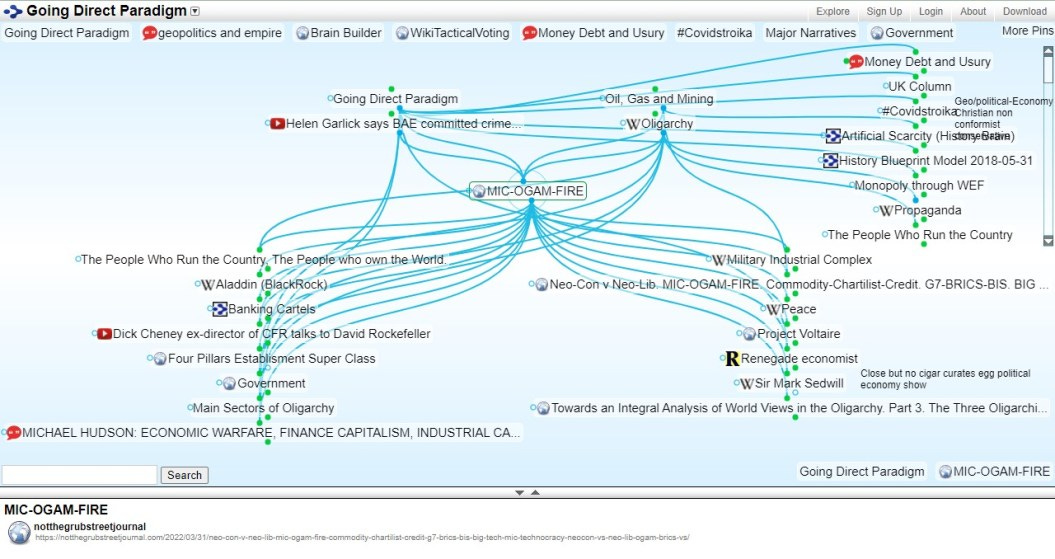



![[COPY] Are We all “precogs” now.](https://substackcdn.com/image/fetch/$s_!AzyR!,w_1300,h_650,c_fill,f_auto,q_auto:good,fl_progressive:steep,g_auto/https%3A%2F%2Fsubstack-post-media.s3.amazonaws.com%2Fpublic%2Fimages%2Ff017d9f5-9f74-4709-85b1-131e0f20bed0_1920x800.png)


